1lumen selects and reviews products personally. We may earn affiliate commissions through our links, which help support our testing.
Imalent MS32 review
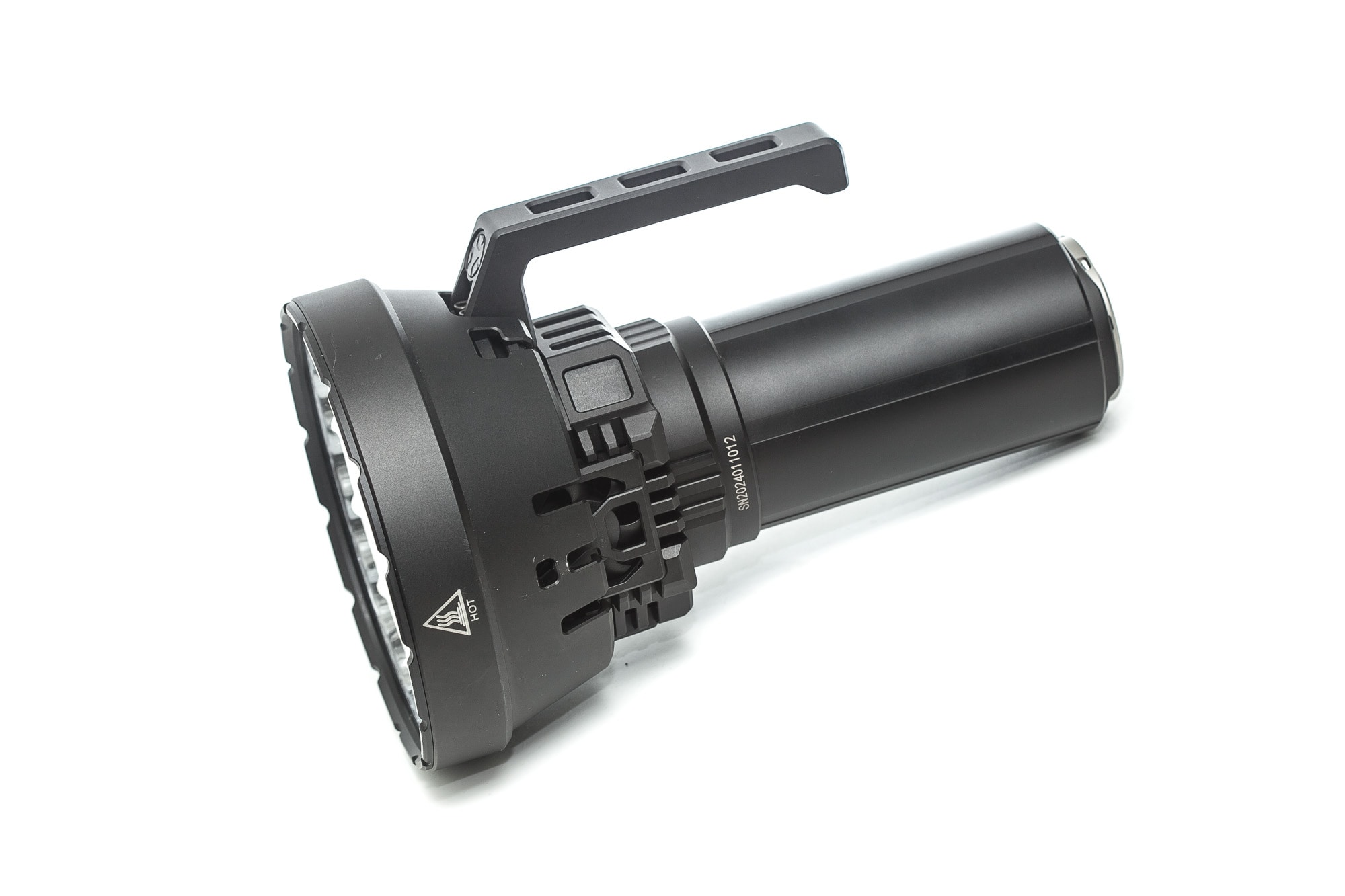
Imalent MS32 specifications
| Brand/model | Imalent MS32 |
|---|---|
| Flashlight category | Searchlight / work light / lumen monster |
| LED | 32*CREE XHP70.2 |
| Max. output | 200,000 Lumens |
| Max. beam distance | 1618 meters |
| Max. beam intensity | 655,000 cd |
| Battery config. | Battery pack (12*21700) (powerbank) |
| Onboard charging | USB-C |
| Modes | 8 |
| Blinkies | Strobe |
| Waterproof | IP56 |
| Review date | January 2024 |
Review intro:
If you ever searched for ‘the brightest flashlight’ in the past 5 years, you would have seen Imalent being mentioned multiple times. And that’s not strange, because it’s probably the only flashlight company trying to push the limits. They did that with the DX80, MS12, MS18, SR32, and now the Imalent MS32.
The first mass-produced flashlight that reached 100,000 lumens, was also from the hands of Imalent, and named the Imalent MS18. However, that was back in 2019, and now, they doubled the output to 200,000 lumens. Will there be another company trying to beat this? Probably not in the next 1 or 2 years.
But I do hope someone will try!
Package quality.
Imalent ships their flashlights in nice boxes, and sometimes even in awesome carry cases. The case for the MS32 looks really nice, except for the cheap clasps. This is what you can find inside the MS32’s box:
- The flashlight: Imalent MS32
- USB-C charger
- O-rings
- Shoulder strap
- Manual
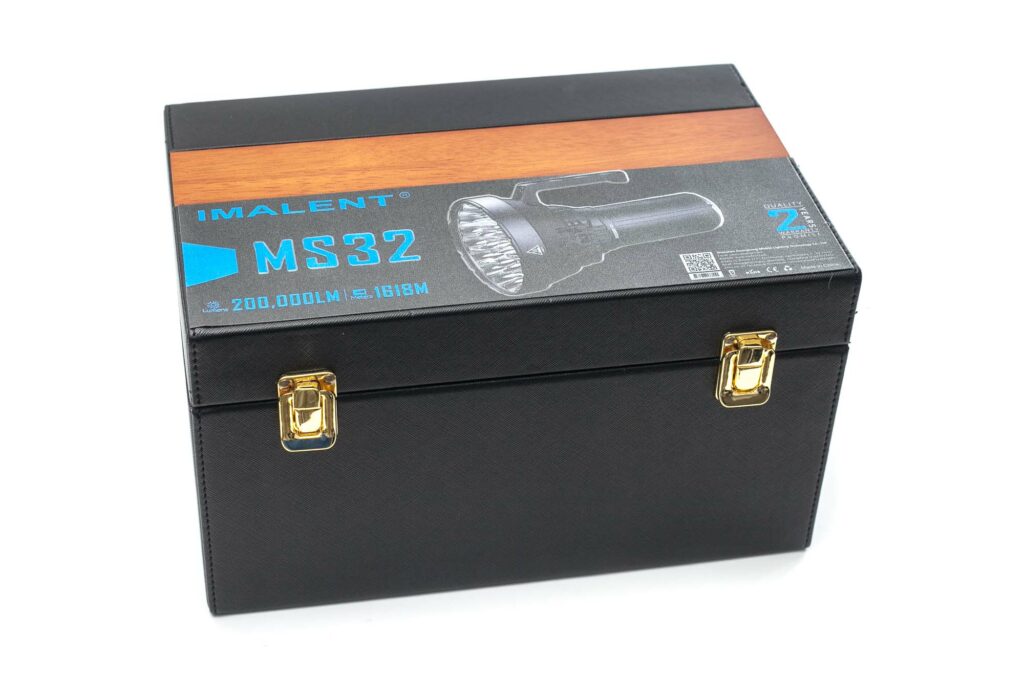
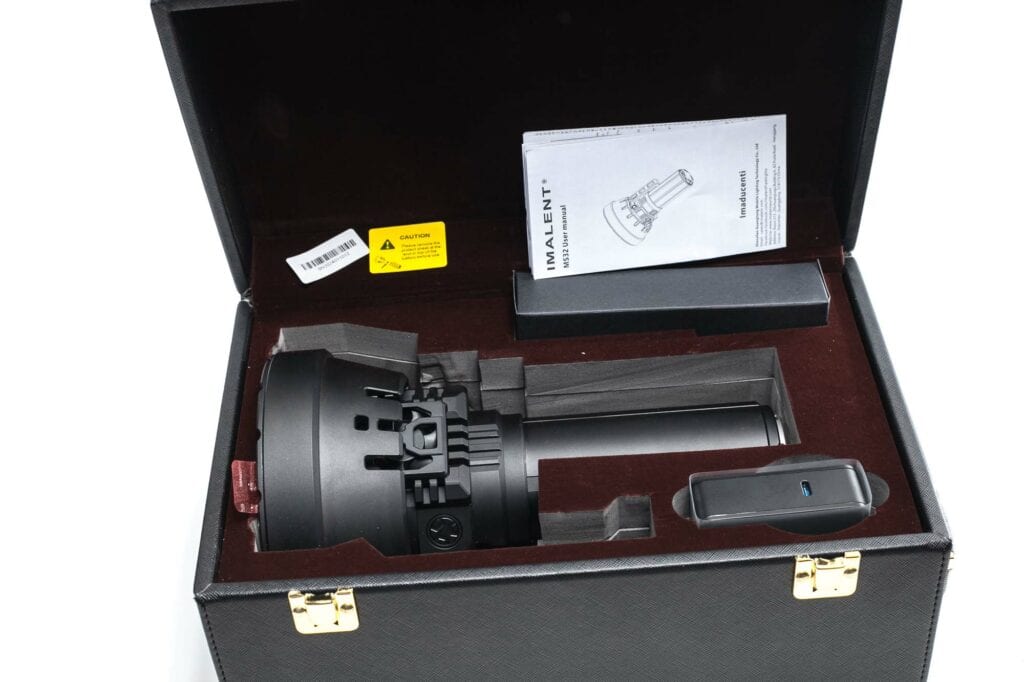
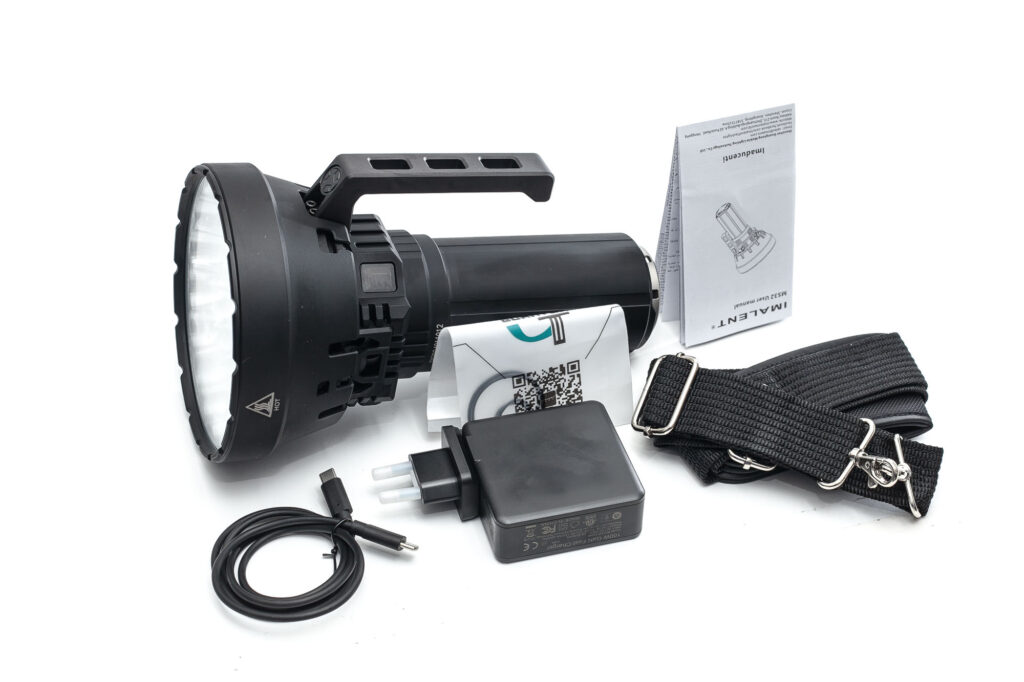
Flashlight in use, Build Quality, and Warranty
Oh boy… a flashlight with 32* XHP70.2 LEDs, and 12*21700 batteries can’t be lightweight. And that’s 100% correct, because the MS32 weighs about 3 kilograms / 6.6 lbs. Because to cool this bad boy, it includes a copper heat sink, and enough body mass to dissipate the heat. And that’s what I found out during my testing.
The body itself has black anodization, and the same machining as the Imalent SR32. When I saw the official announcement of the MS32 the first time, I complained to Imalent saying they should have used a different naming convention. Somehow I thought they only updated the LEDs on the SR32 from XHP50 to XHP70. But I was wrong. This is a totally different flashlight!
I can’t wait to show you the performance section of this review.
Fortunately, Imalent includes a shoulder strap, so you don’t have to hurt your hand by carrying it too long. It connects to the plate connected at the rear, and through a hole in the front. Connecting to the charge cover plate is easy peasy, but connecting the other end at the front, is not. You need to use some force to connect it, and even more to remove it.
Even with the pre-attached carry handle, those 6.6lbs can start hurting your fingers. And you are not supposed to remove the handle, as they have glued it. Imalent used 2 small screws to attach the handle to the body. I would probably like to see a bit more surface area covering this connection, including a few more screws.
From pictures, the MS32 looks exactly like the SR32, but if you compare them in person, you’ll notice some differences right away. A bigger batterypack for example. But the carry handle also changed a bit, because the electronic switch, moved from the side to the front of the handle. This means, that there is no difference in usage between left-handed and right-handed users.
There is a second switch, located on the body, on the right side of the carry handle.
On the opposite side of the handle, you have an updated OLED display. It shows the current output, whether the flashlight is locked, but also warns you when the battery is running low.
The handle also works like an anti-roll feature, so take that for what it’s worth.
Unfortunately, Imalent still haven’t added a tripod mount, even though we recommended that a couple of times. And in my conversation with the people at Imalent, they said they were afraid people will use cheap tripods that can’t handle this flashlight. I told them they should add a warning, and blame the user if they do so.
Another thing I mentioned is the way to see what mode the flashlight is currently in, when the flashlight is turned off. This was due to the SR32 having mode memory, and it could either be 100 lumens or 120000 lumens. Their workaround is still pretty good, since you have direct access to Moonlight (80 lumens) from off by a long-press.
A double click will activate strobe.
Because of the output, size, and weight, you are limited to several use cases, and EDC is not one of them. Imalent mentions the following use cases:
- Large area surveillance and security
- Livestock security
- Oil and gas pipelines & offshore rig inspections
- Shoreline search & rescue
- Ultra Long-distance distress signaling
- First Responder Operations
- Trailing wounded animals
- Wilderness search & rescue operations
- Blind/Disorient suspects and assailants
- Large area lighting for disaster scenes
- utilize with a lens to project huge images
- Police manhunts
- Theft-deterrent
- Emergency fire starter
But I think you can also use it for camping, even though I find the 324 hours of 80lm not too impressive. I also told them, that they should consider a dual channel flashlight, where the lowest output mode only uses a single emitter, instead of all 32! This should increase the runtime quite a bit for Moon mode. They replied that this could lead people to think that the flashlight is broken. But you could easily add a designator (or add it right in the middle) to clearly show that this LED is special. Anyway, not really very important though, because this is supposed to be a lumenmonster.. not an EDC flashlight. Let’s move on:
Warranty Policy
1. Free Repair/Replacement within 15 Days after Receipt
Within 15 days after receipt and under normal use, any quality problem with your IMALENT flashlight, you can either send the light to repair or a new one of the same type with same specifications will be replaced; if the same model has been discontinued or not able to be replaced timely due to other reasons, another model with same or better performance will replaced instead;
2. 24 Months’Free Repair
Within 24 months after receipt and under normal use, any quality problem with your IMALENT flashlight, you can send it to repair for free;
Torch with built-in battery and battery stick, 12 months warranty.
3. Lifetime Limited Maintenance
IMALENT provides you with lifetime limited maintenance for your flashlight, after the 24 months’ free repair period ,any problems with your flashlight, IMALENT can repair and maintain it ,repairing fee will be charged on an actual cost basis, no labor cost charged;
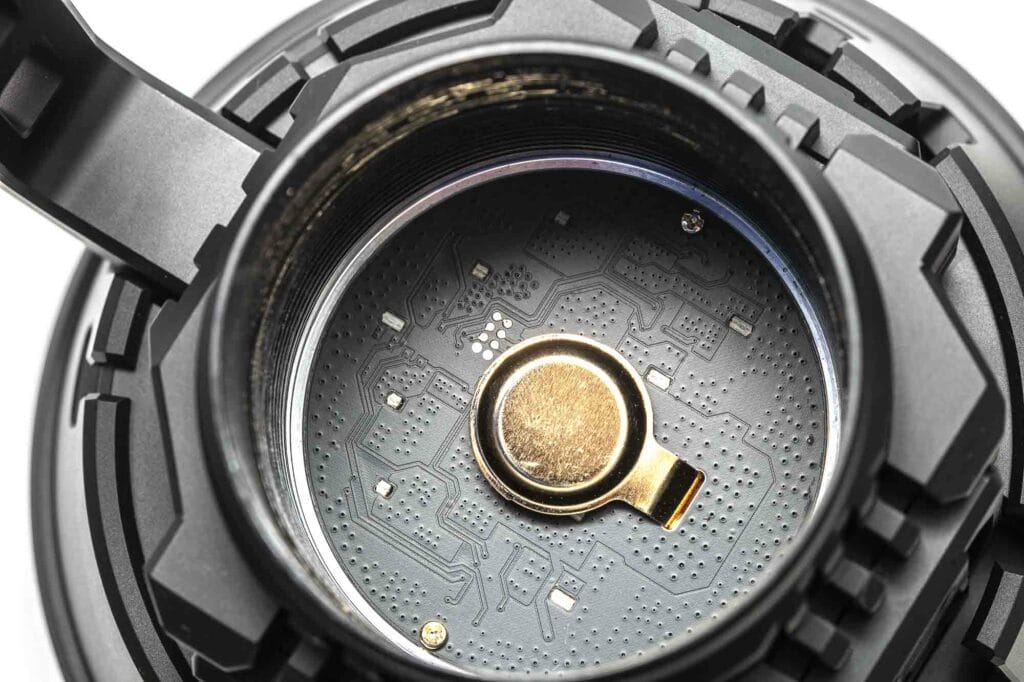
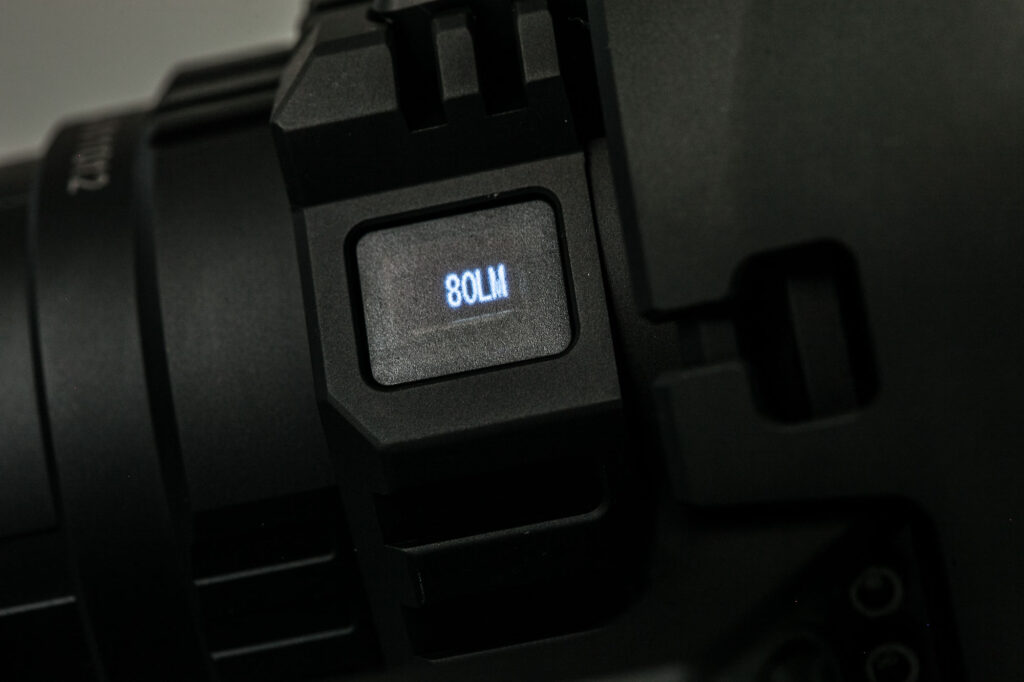
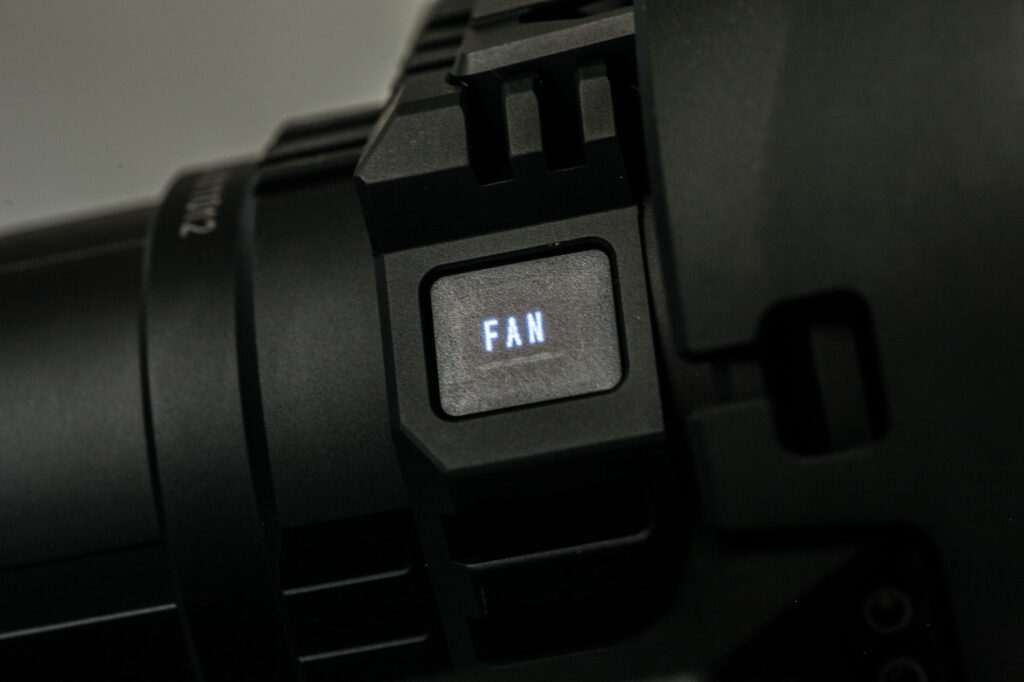

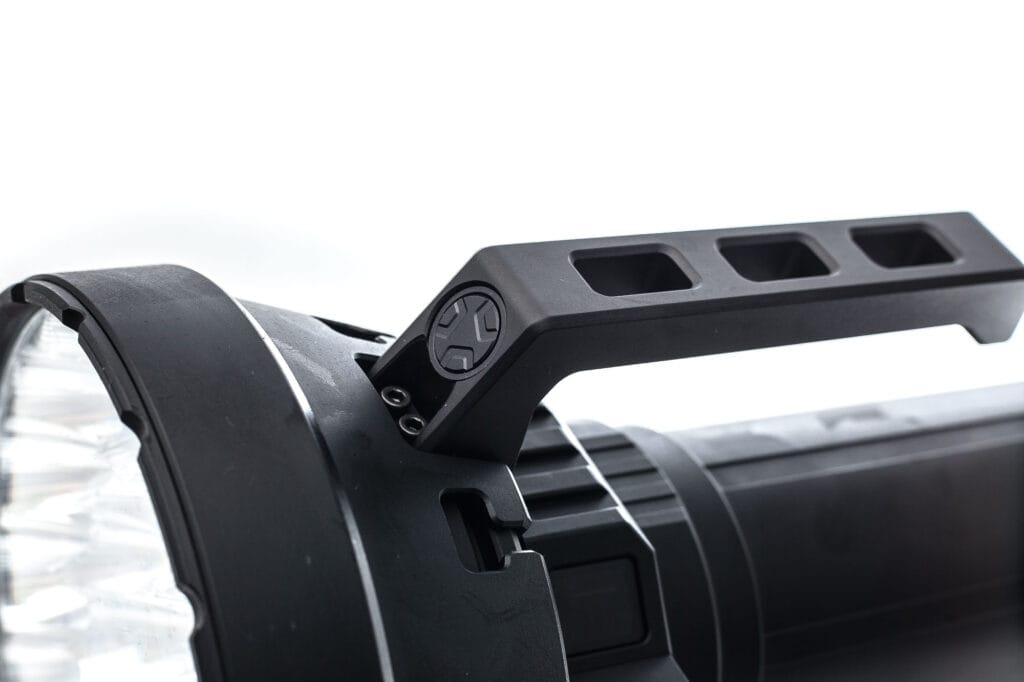
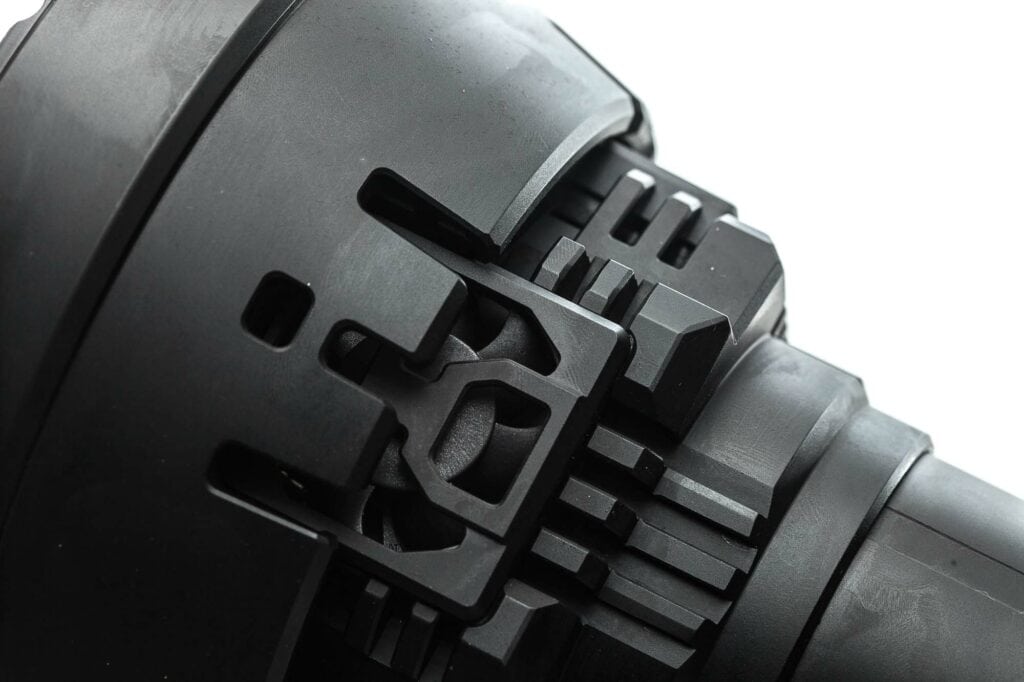
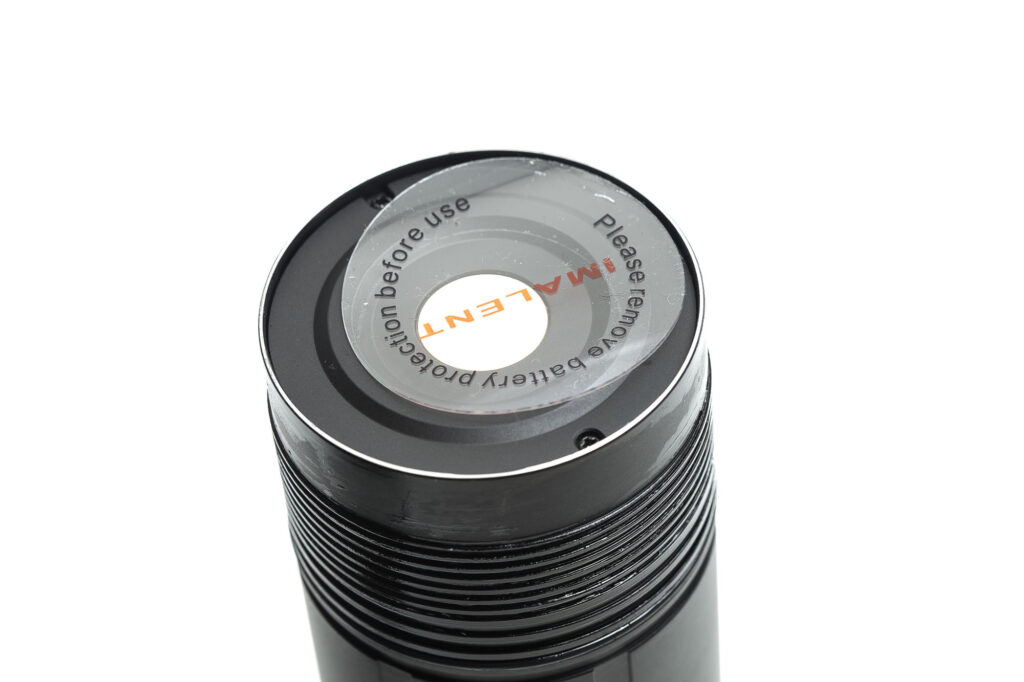
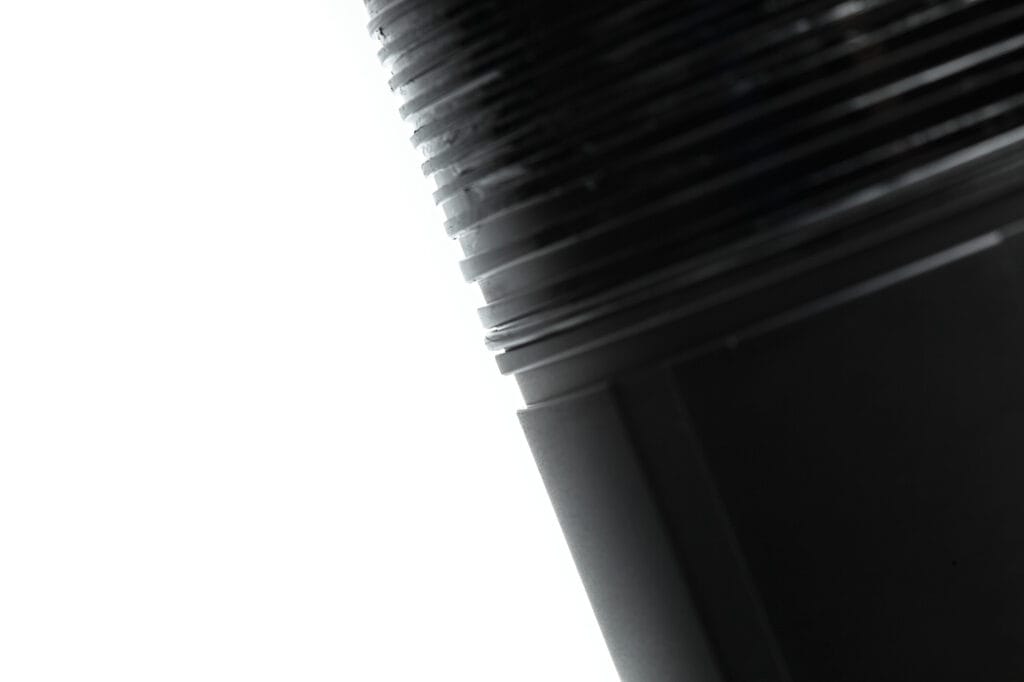
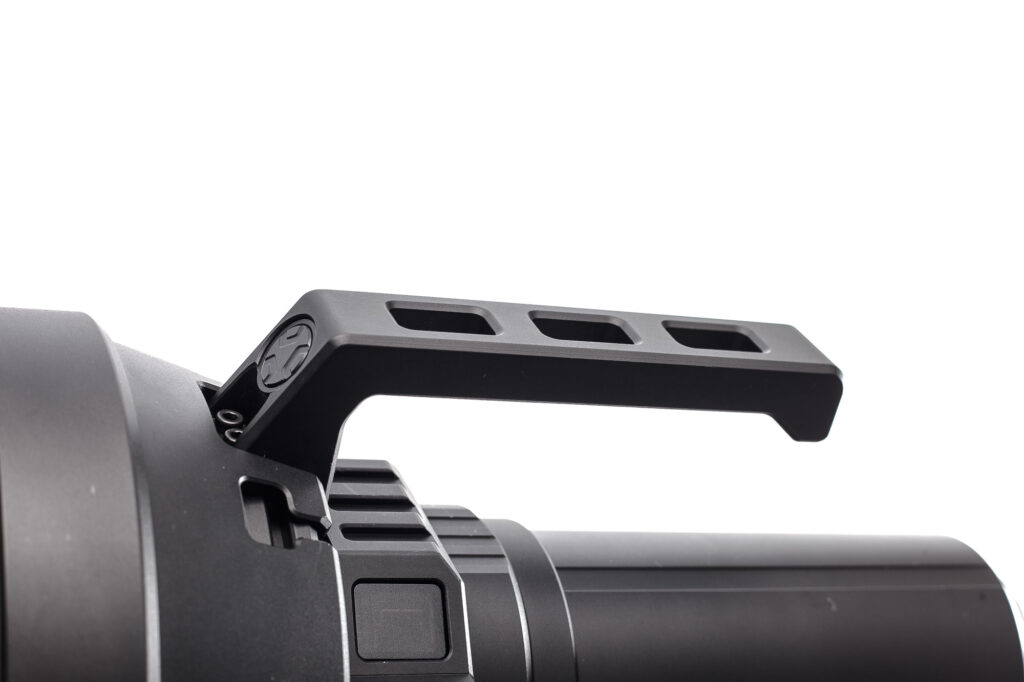
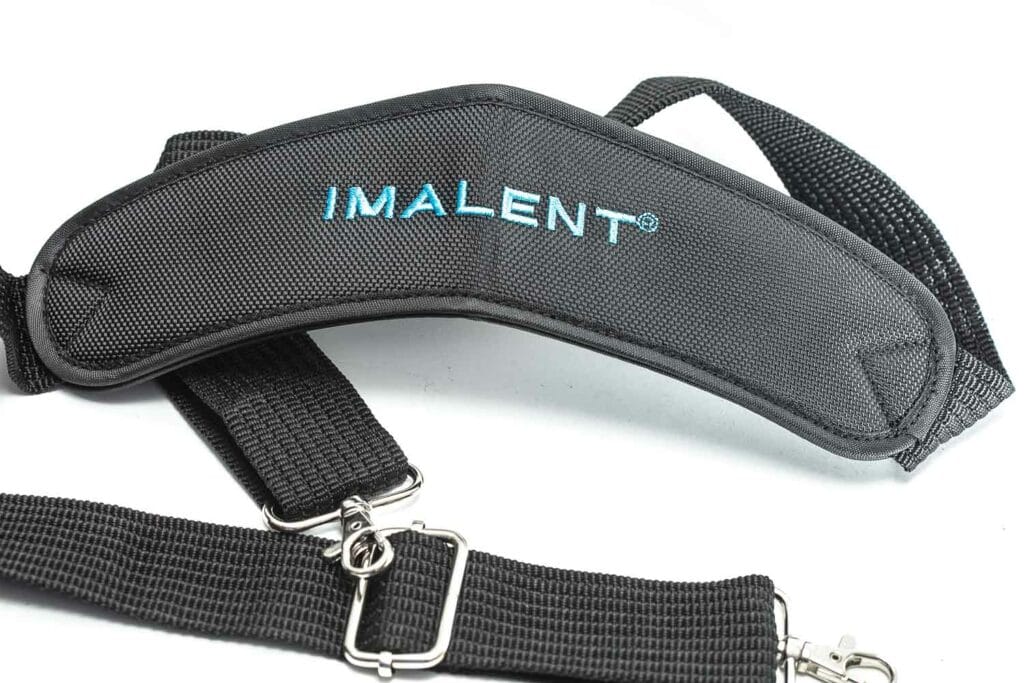
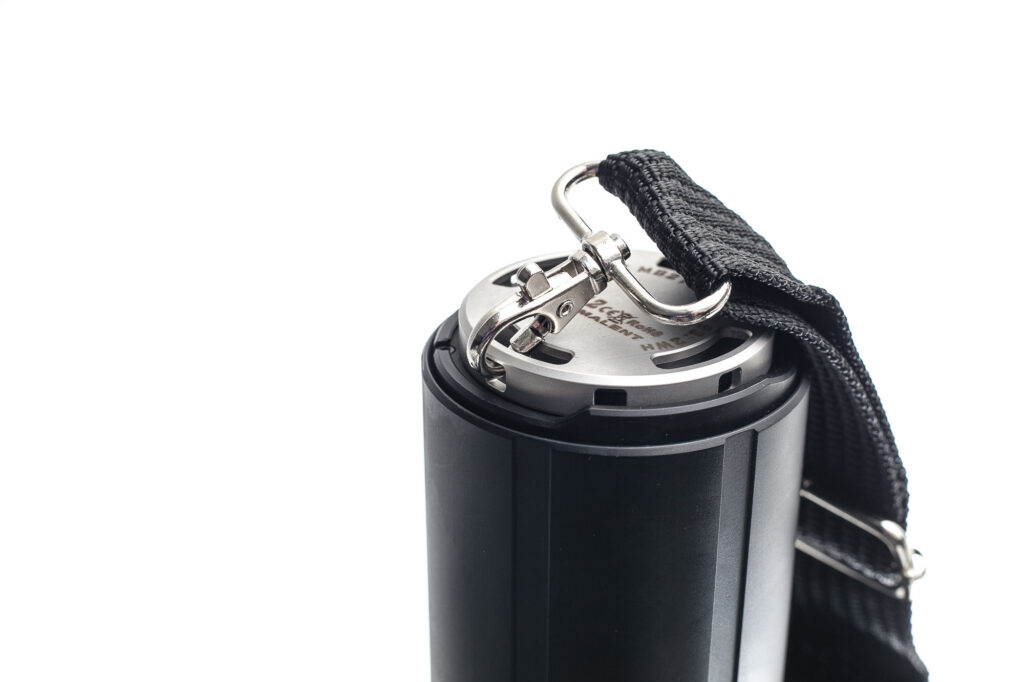
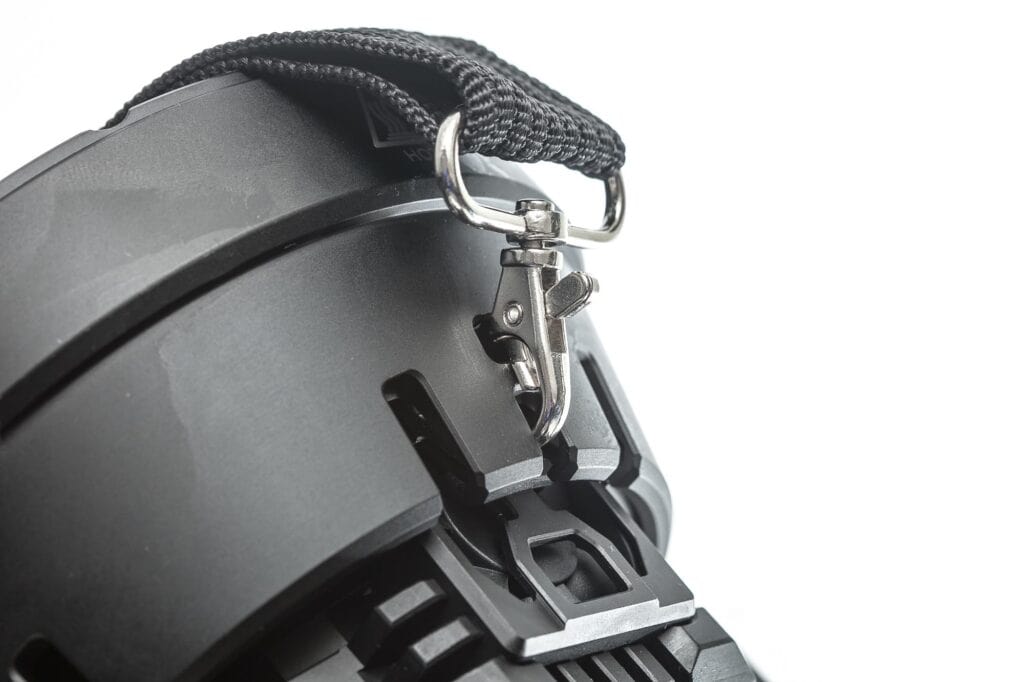
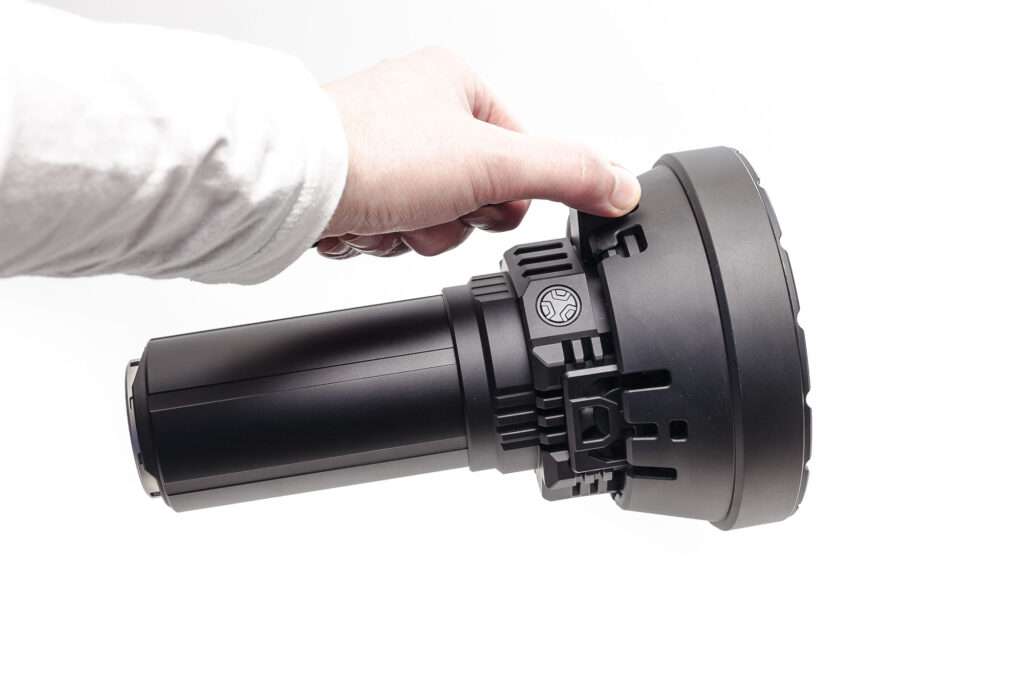
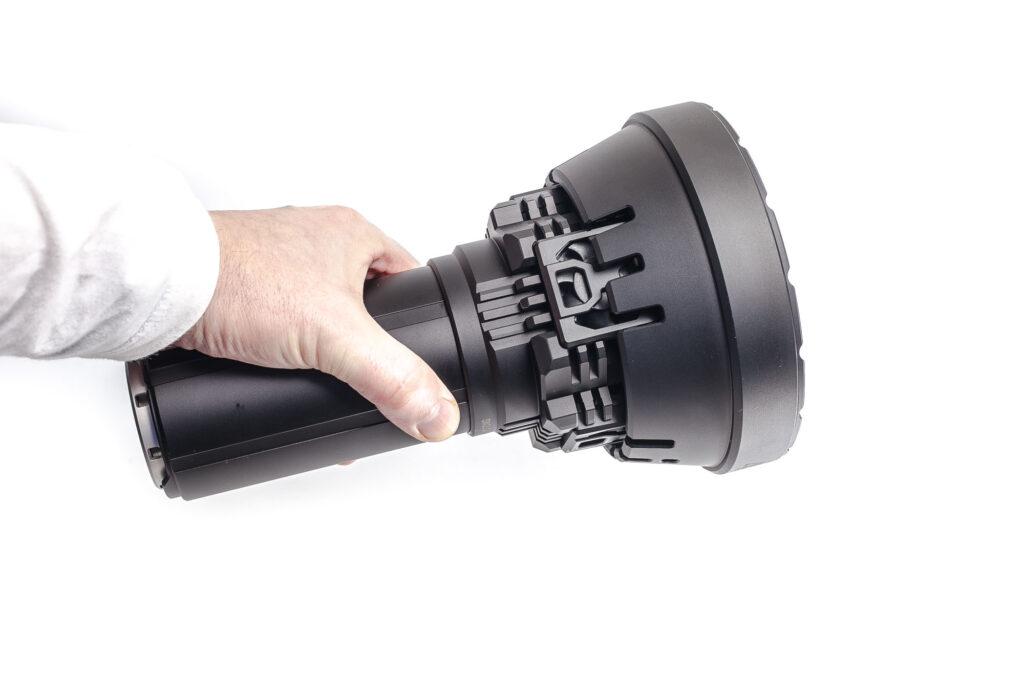
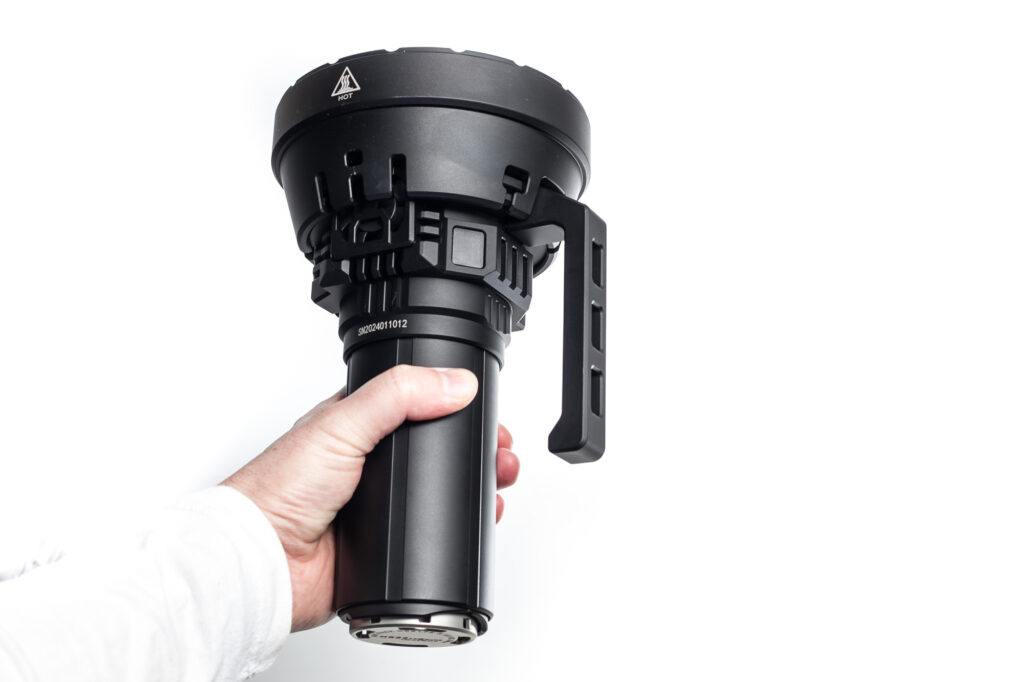
LED, Lens, Bezel, Beam, and Reflector
If you are into flashlights for at least a few years, you know that the CREE XHP70.2 has made its way into high power flashlights for a long time. It almost feels like there are no other good options?
Because the XHP70.2 has been around since 2017, and are still being used, especially in the most powerful flashlights on the planet. They are available in 6V and 12V configurations.
Along the years, the prices would have had to come down. And if you are going to make a flashlight with 32 LEDs, you better not want to pay 30USD for a single LED, like the SBT90.2 for example. The cost for just the LEDs would have been extraordinary.
Keep in mind that the 700USD for the MS32 is not very low by any stretch of the imagination. But if you look at the alternatives, and how they are built, the price is not too high either.
The XHP70.2 aren’t know for the nicest beams, but we are not looking at an ‘inspection tool’. This is a high power search light, and who cares about high CRI at this point.
All LEDs seem to be well centered, in pretty shallow smooth reflectors, which will produce a very floody beam. And if you ever want to reflow some LEDs, you better be very experienced.
The reflector is protected by a glass lens, and a black aluminum bezel. Nothing fancy or special here.
If you look at the beam, you can definitely notice some brighter spots in the beam, and it’s pretty floody. And it does have some color shift, albeit it not too noticeable. But of course I measured the beam with my spectrometer.
Spectral measurements:
I used a Sekonic C800 spectrometer to measure the flashlight at 5 meters distance. I measured 2 modes, namely Turbo, and Middle 2. I can’t remember whether I used the correct name of this mode.
| Mode: | CCT: | CRI Ra: | duv |
|---|---|---|---|
| Turbo | 6093K | 69.3 | 0.0019 |
| Mid 2 | 5800K | 69.0 | 0.0068 |
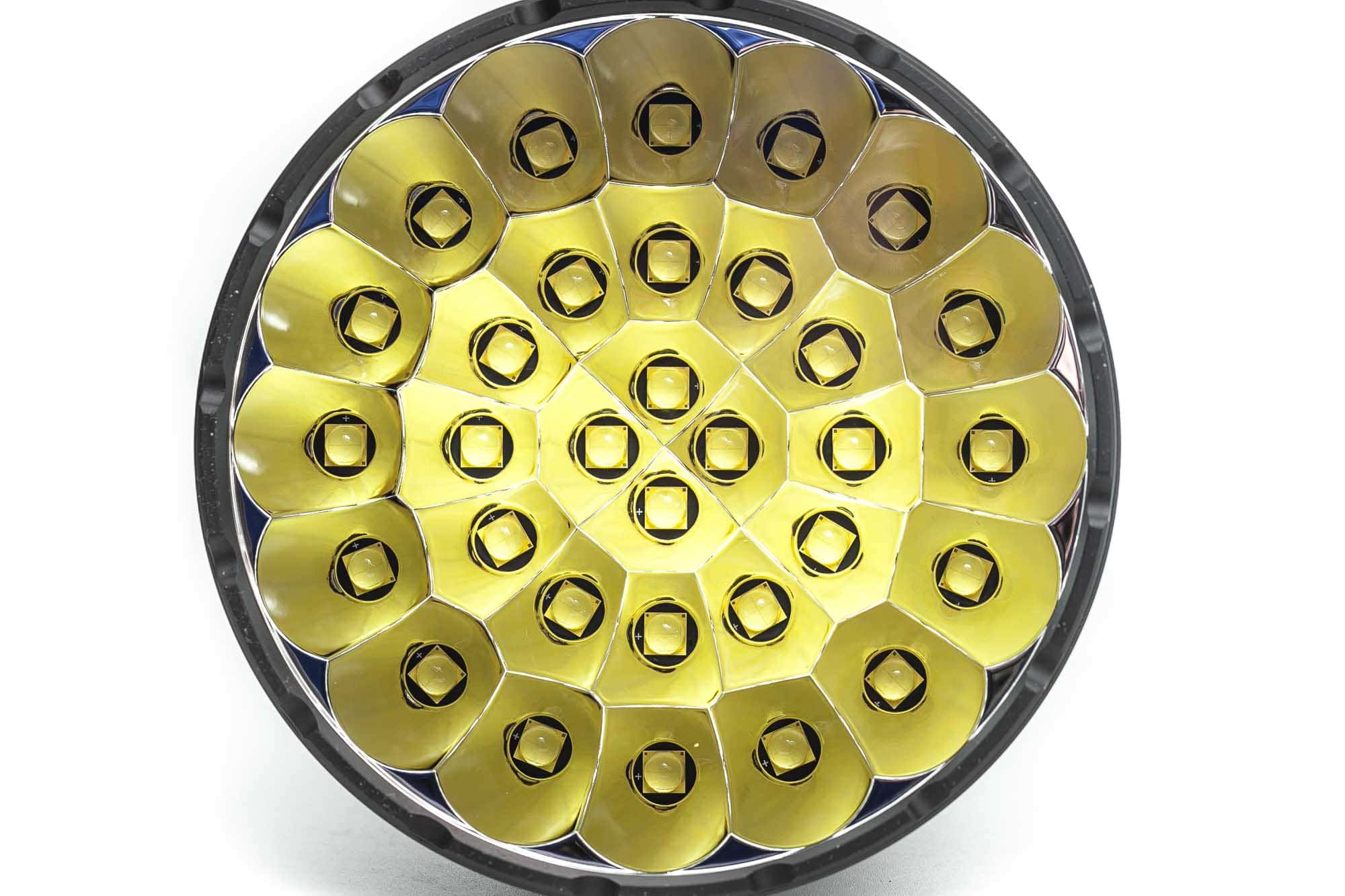
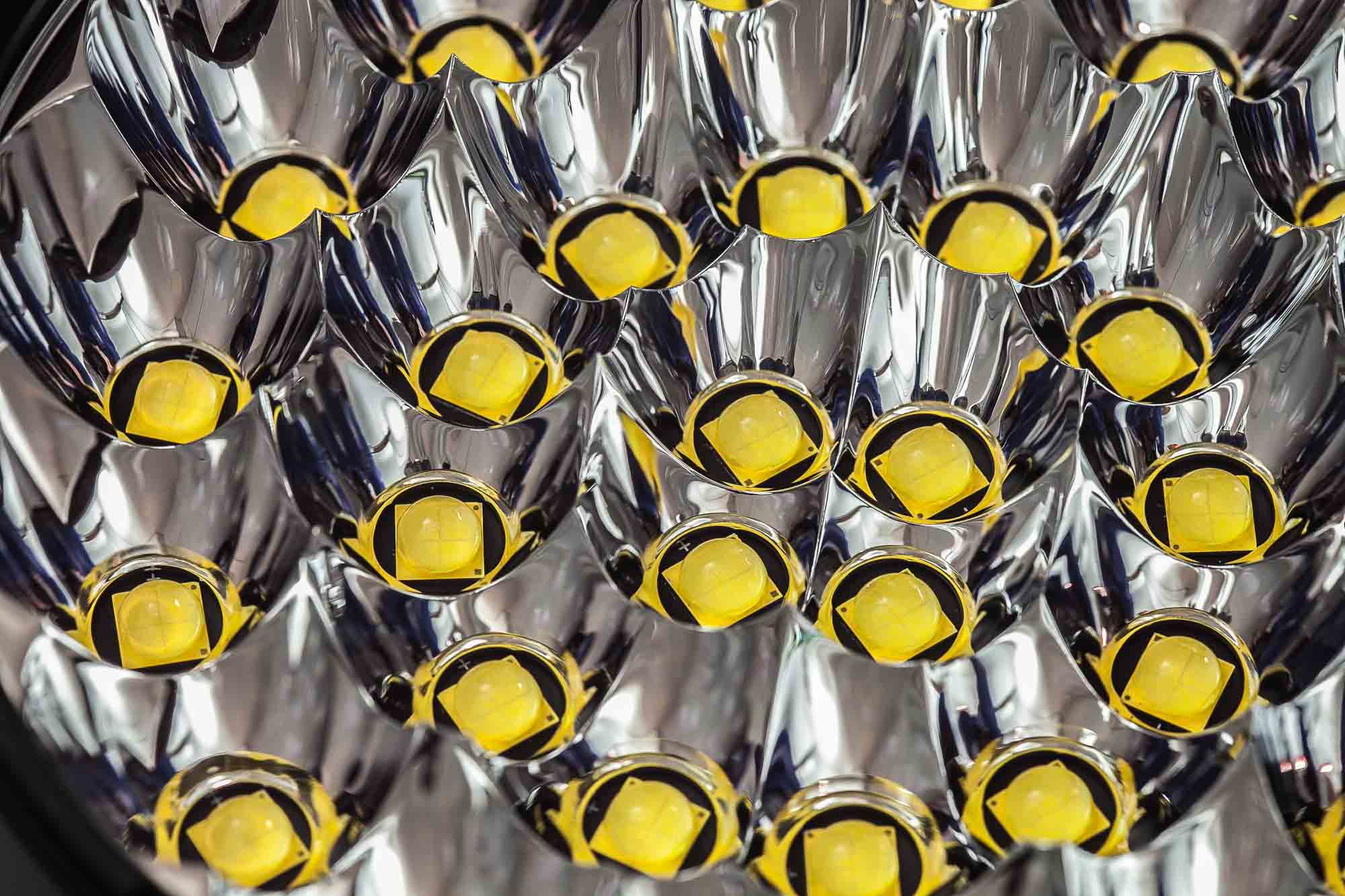
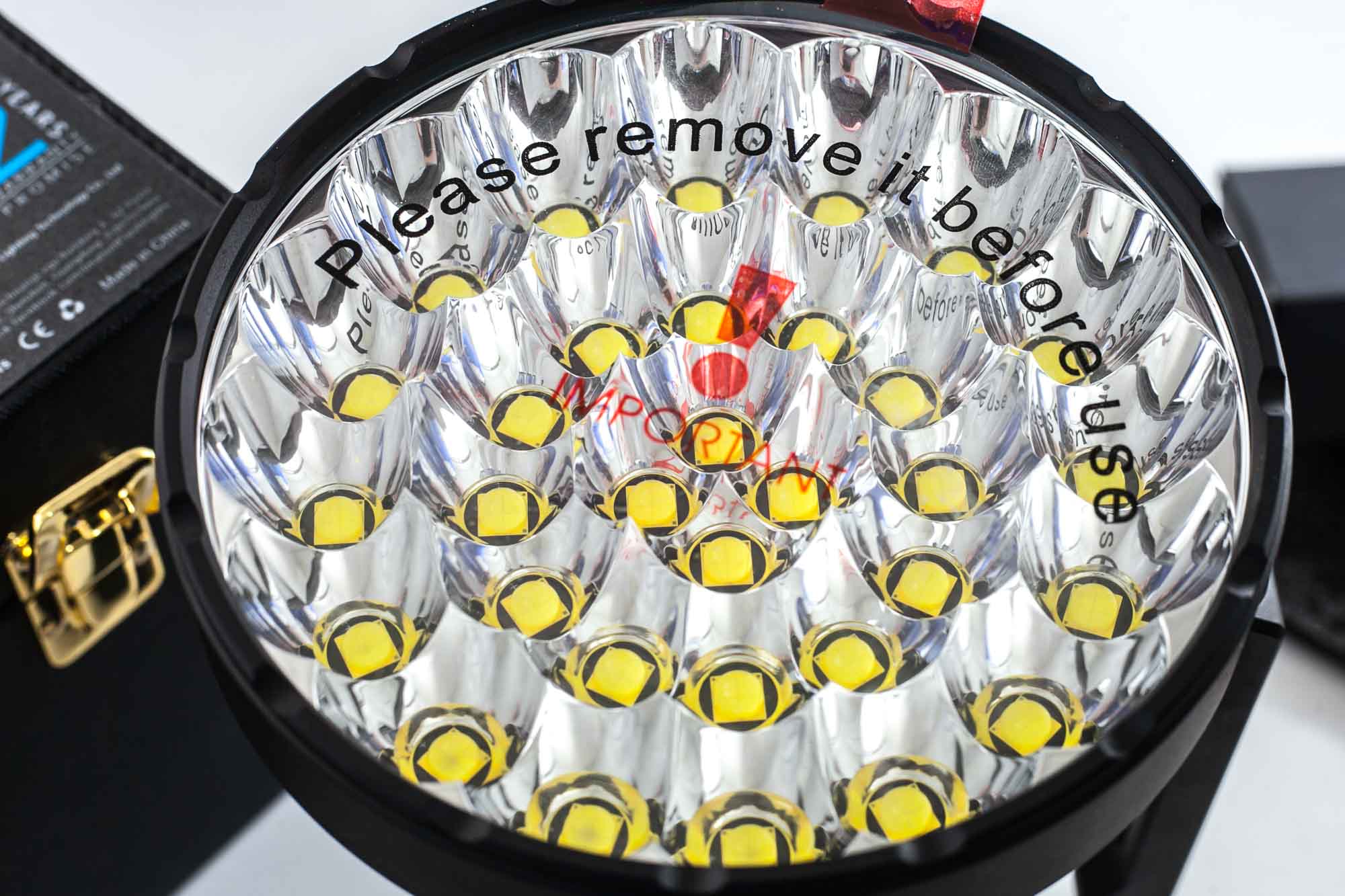
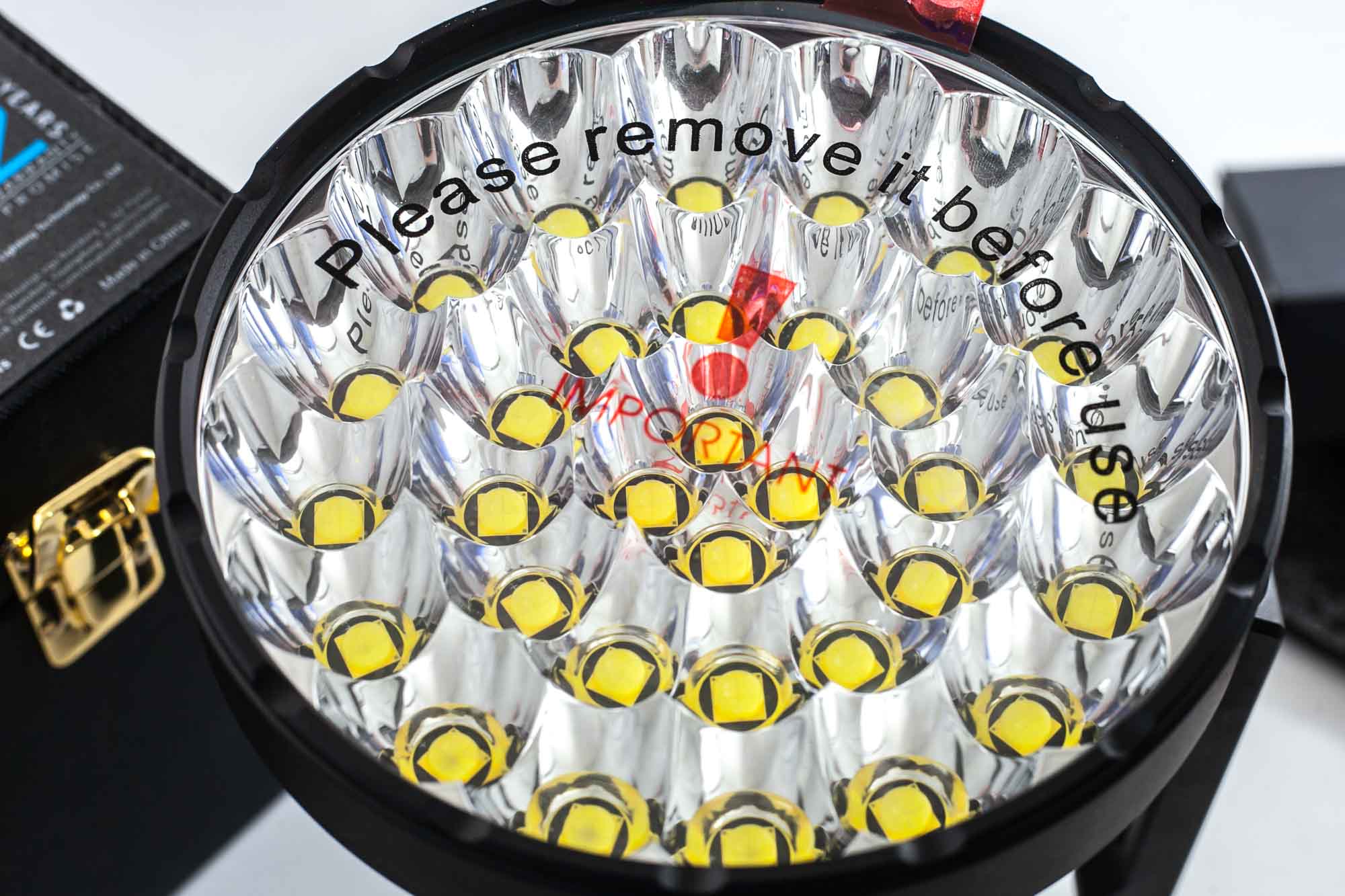
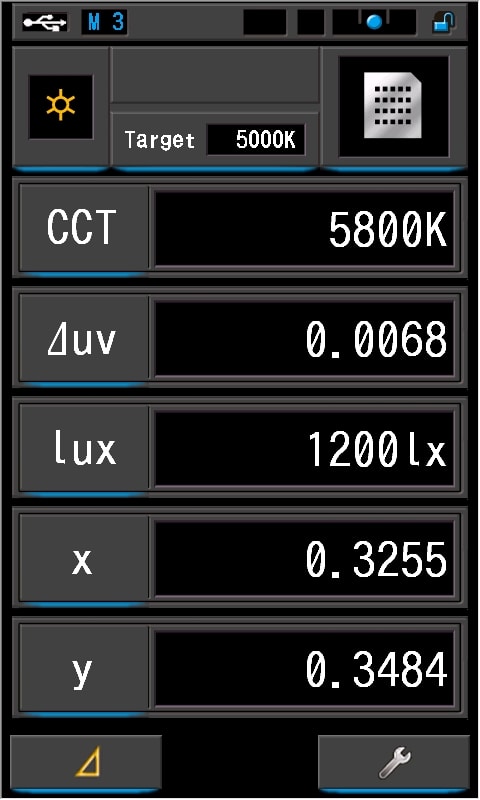
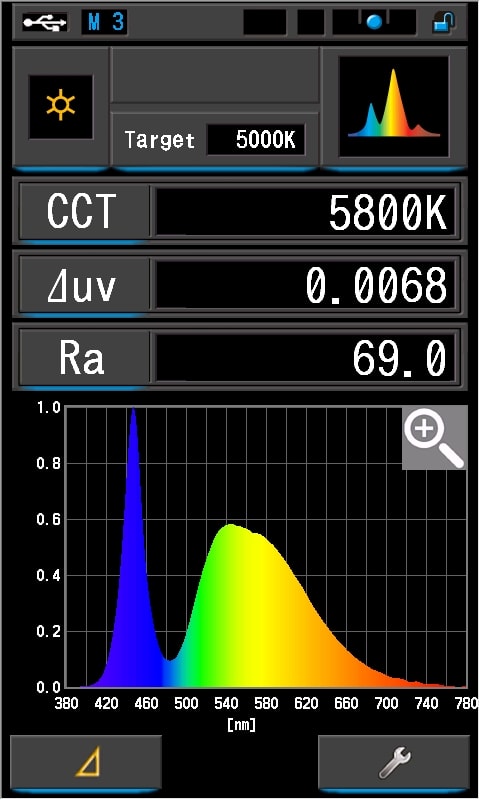
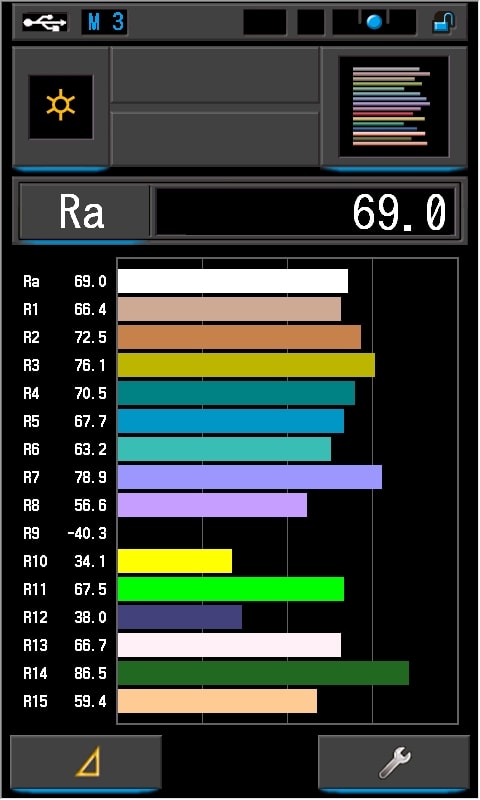
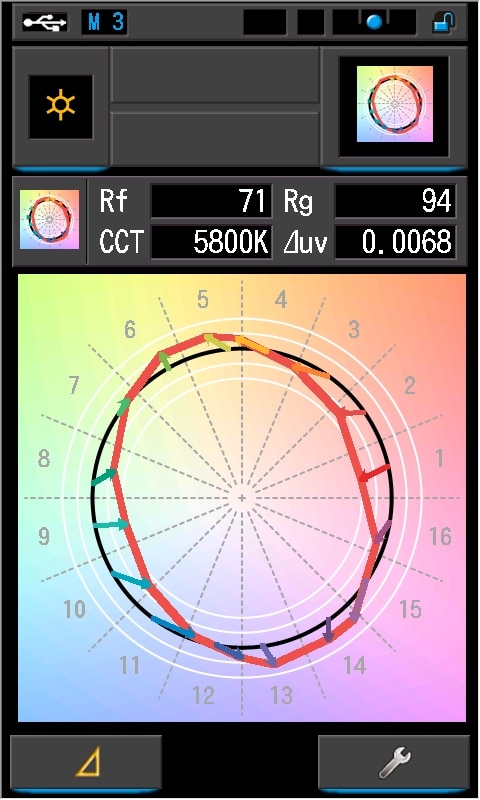
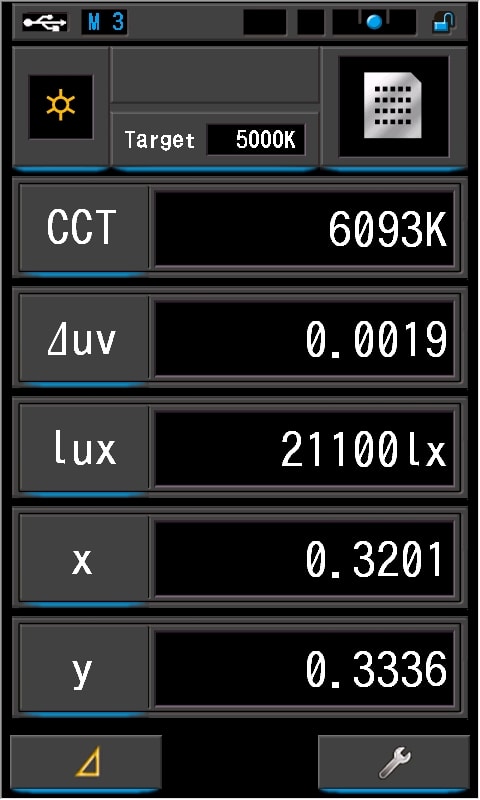
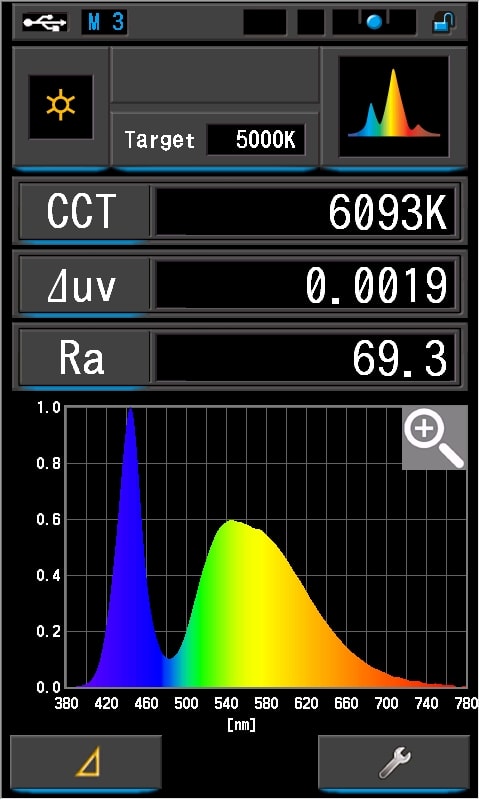
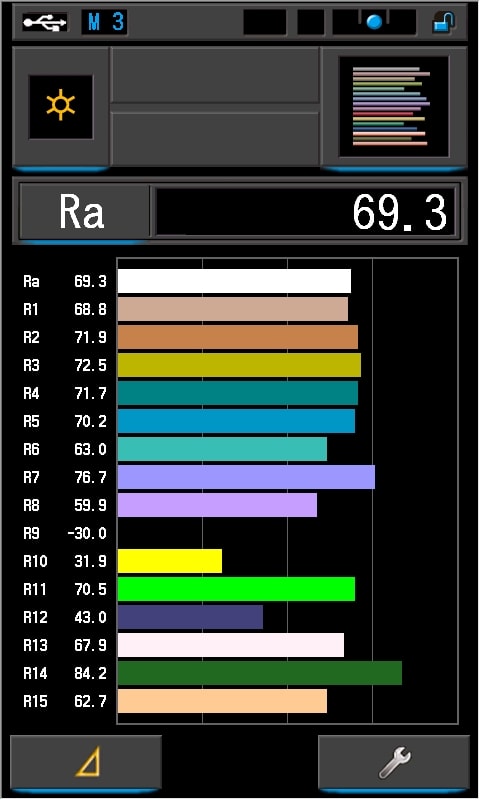
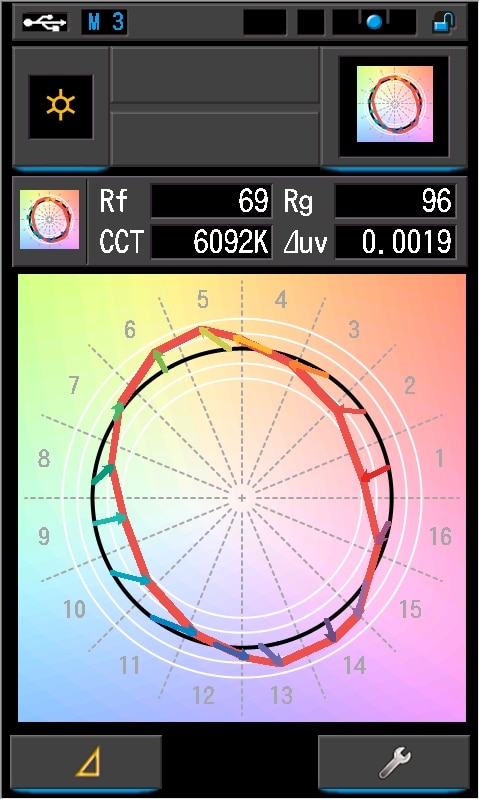
Dimensions and its competition
Dimensions:
| Imalent MS32 | Millimeters | Inches |
|---|---|---|
| Length (no charge cap) | 235 mm | 9.3 in |
| Head diameter | 149 mm | 5.8 in |
| Body diameter | 68 mm | 2.7 in |
Dimensions are rounded to the nearest millimeter and the nearest tenth of an Inch.
Weight:
| Imalent MS32 | Weight in grams | Weight in oz. |
|---|---|---|
| With battery | 3118 | 110 oz |
Weight is rounded to the nearest gram and tenth of an Oz.
Imalent MS32 Bright Flashlight Comparison
Size compared to other bright flashlights
Group 1, Imalent flashlight from left to right: Imalent MS12 Mini, Imalent RT90, Imalent SR32, Imalent MS18, Imalent MS32, Imalent MS12
Group 2, brightest flashlights: Imalent MS12 Mini, Acebeam X70, Acebeam X75, Imalent MS18, Imalent SR32, Imalent MS32.
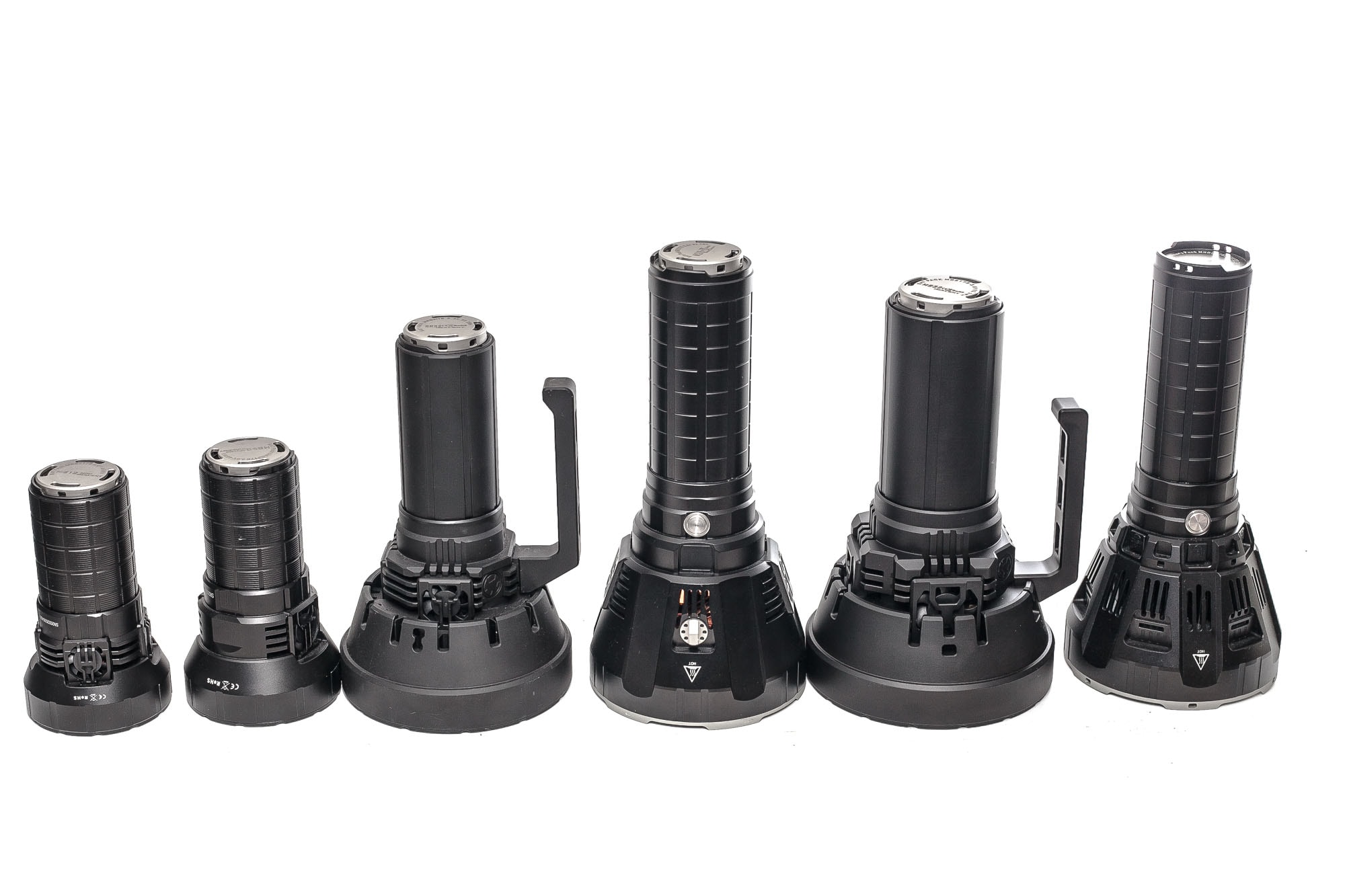
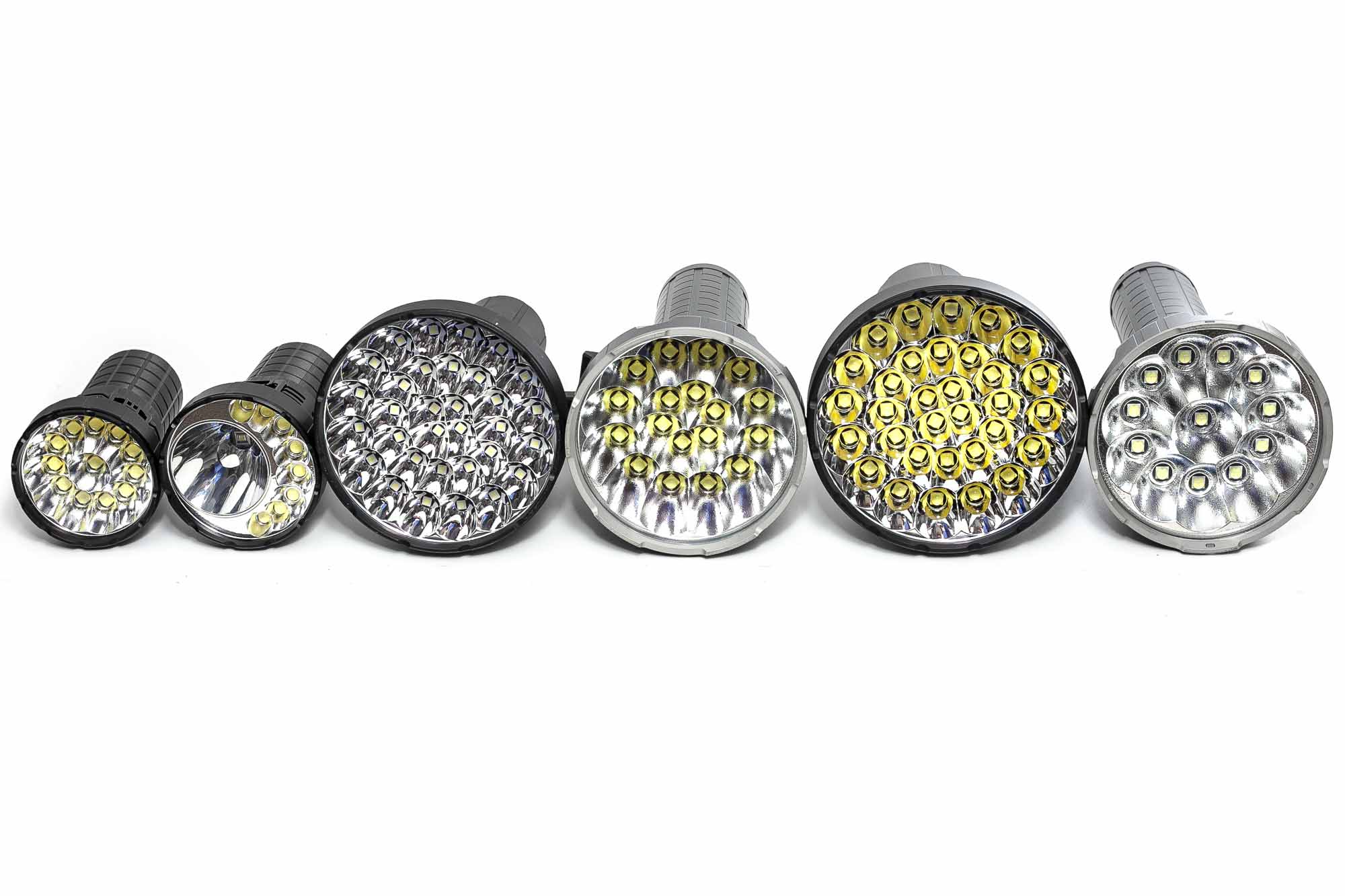
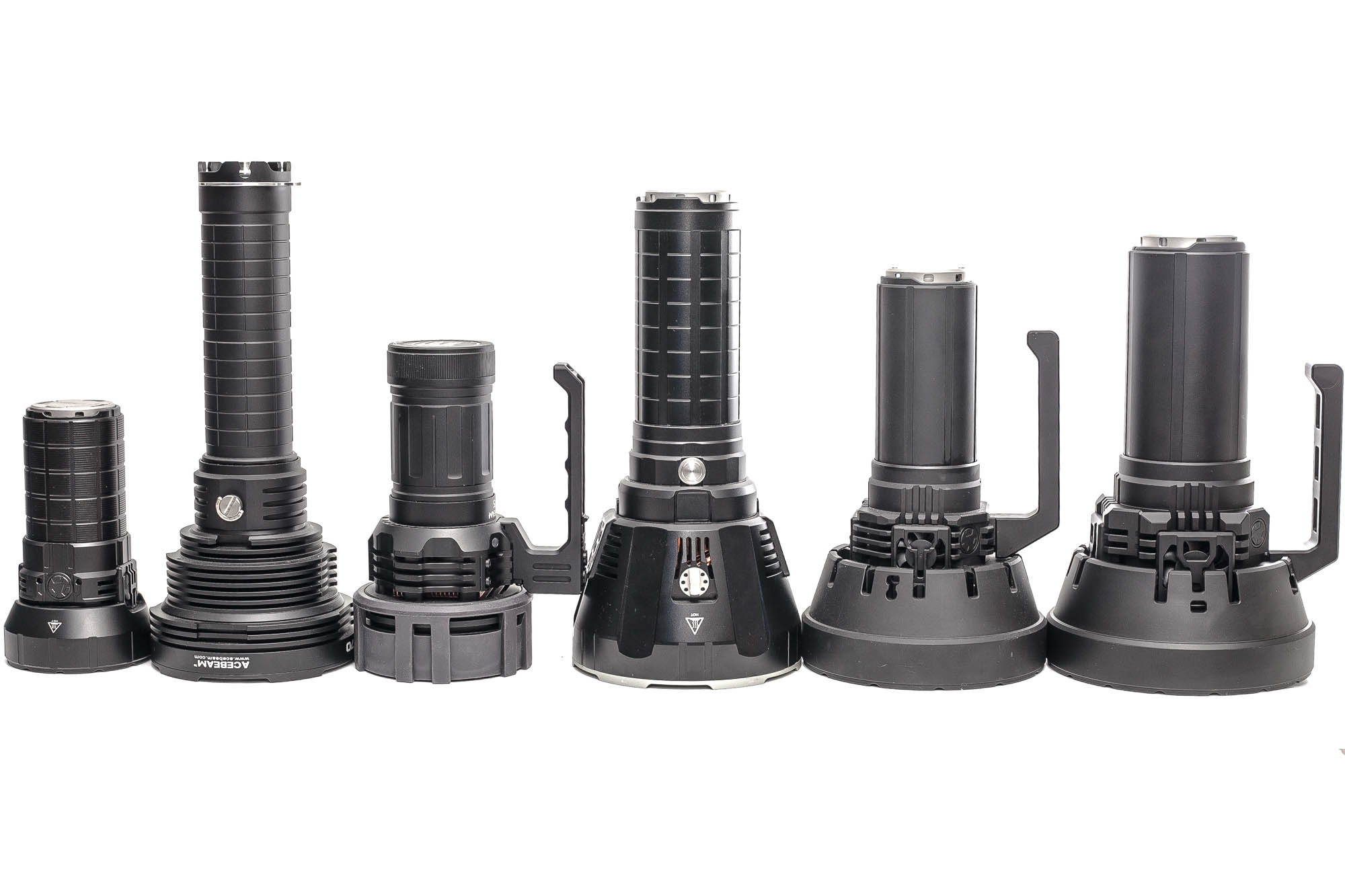
Imalent MS32 UI : User interface and driver
The Imalent MS32 uses internal fans to cool down the flashlight from High 1 and upward. And it can’t activate Turbo mode when the temperate is 65 degrees or higher. However, the fans can not be turned on manually when the flashlight is turned on. They can only be activated manually when the flashlight is turned off.
Something else that confused me is the naming of the 8 modes. There were basically 3 ways they were named. 1 image had 3 High modes, and 2 Med modes, and the other had 2 High modes, and 3 Med modes.. And the manual was again different with a Moonlight mode, instead of Low mode etc..
Anyway, I notified Imalent about this, and the following modes will be used from now on.
The available main modes:
- Moon, Mid Low, Middle 1, Middle 2, High1, High 2, High 3, Turbo
The available special modes (blinkies):
- Strobe
From OFF: (with either switch)
- Single-click: to last used mode ( mode memory, except turbo and strobe)
- Double click: Turbo (and another double click for strobe)
- 3 clicks: battery check
- 4 clicks: fans turn on (they will turn off when you turn the flashlight on, between Moon and High 1 mode
- 5 clicks: Lockout mode
- Press and hold 3 seconds: Moonlight mode
From ON: (with either switch)
- Single-click: off
- Double click: Turbo
- Triple-click: Battery check
- Press and hold: Cycle through the menu from Low to High
Shortcuts:
- To Turbo: double click from Off or On
- To Strobe: not available, need to double click for Turbo, and then another double click for strobe
- To Moonlight: long-press from off
Cooling FANS:
- The built in fans will automatically turn on from High 2 and above
- The fans can be turned on when the flashlight is off by 4 clicks
- Once the fans are turned on, when the flashlight is off, a single click will turn the flashlight on, but the fans will turn off. You can not keep the fans running unless you are returning to High 2 or above.
Mode memory:
- Yes (single click from off returns to last used mode)
Blinky modes menu:
- Strobe.. double click for Turbo, then another double click for Strobe
Low battery warning:
- The little display shows a low battery according to the manual, but nobody will look at the little display.
- My suggestion is to let the flashlight blink a few times to indicate low battery
- Or add a bright red LED near the handle. Not like the tiny one they used in the MS12 mini for example. But a much brighter one, that sits on the head for example.
Lock-out mode:
- 5 clicks from off. Repeat 5 clicks to deactivate again.
PWM:
- Not visible
I like that Imalent included a real Low mode, and added a switch to the handle. They also upgraded, so you can access the lowest mode directly from Off.
Some ideas:
- Improve: Like with Anduril, press and hold when on for increasing brightness, release and press and hold again for decreasing brightness.
- Idea: Perhaps have fewer modes, and go from 2000 to 10000 to 40000 instead of having 2000-4000-9000-18000. But that’s not a big deal, it just takes a long time to run through all the modes.And if you want more modes, make it stepless dimming.
- Improve: Let Moon not be part of the mode sequence and only accessible from Off. Right now, you get Moon mode, right after Turbo. It’s very difficult for your eyes to adjust from 200K to 80 lumens in the darkness. So going back to 2000 lumens would be better.
- Allow the user to activate the fans while the flashlight is on, in lower modes.. Or better: let the fans be controlled by a thermal sensor.
Imalent MS32 Charging and batteries
Imalent chose to use a built-in battery pack rather than separate cells. They also did that with the SR16, MS12, MS12 mini, MS18, and the SR32. A battery pack has some benefits but also a couple drawbacks. The battery pack is housing 12*21700 batteries with 4,000mAh each, and the total Voltage after a full charge is around 16.5Volts.
One of the biggest changes for Imalent in their latest flashlights is the use of USB-C charging! This was one of the features me, and many others, had been wishing for.
Imalent allows 100 Watt fast USB-charging, to charge the battery pack within 120 minutes according to the manual. In my testing, I measured the charging time each time after a runtime test, but forgot it 1 or 2 times. The higher mode I tested for runtime, the shorter the charge time. This is the order in which I tested the flashlight.
| Charge | Total charge time |
|---|---|
| Charge 1 (after Turbo) | 1 hour and 43 minutes |
| Charge 2 (after High 3) | 1 hour and 41 minutes |
| Charge 3 (after High 2) | 1 hour and 43 minutes |
| Charge 4 (after High 1) | 1 hour and 47 minutes |
| Charge 5 (after Moon) | 1 hour and 55 minutes |
| Charge 6 (after Mid1) | 1 hour and 47 minutes |
| Charge 7 (after Mid2) | 1 hour and 51 minutes |
The end voltage after charging is 16.5Volts (empty around 12V)
The included USB charger has a single port. It easily reached 100Watts of charging, and even passed it, so one of my USB meters gave an error, maxing out at 100watts. Another USB meter showed 101 Watts.
The USB-port is located in the same position as where the DC charing port was located: at the tail end of the flashlight, underneath a rubber flap. That rubber cover doesn’t seem to be thought through too much. You need nails to open it. Also, when you screw back the stainless steel cover, you can feel a bit of resistance from the rubber cover. The rubber cover doesn’t get back into position very well. This was also not optimized.
Imalent MS32 Powerbank
The powerbank feature is also pretty neat. Even though the manual and website listing don’t particularly highlight this feature. I don’t know why, because it’s really useful and a great feature, and they also didn’t really highlight it with the SR32.
I charged the Acebeam X75 from a fully charged MS32, and the X75 charged at 19.85V, 3Amps, with a total of 60 Watts. That’s pretty cool!
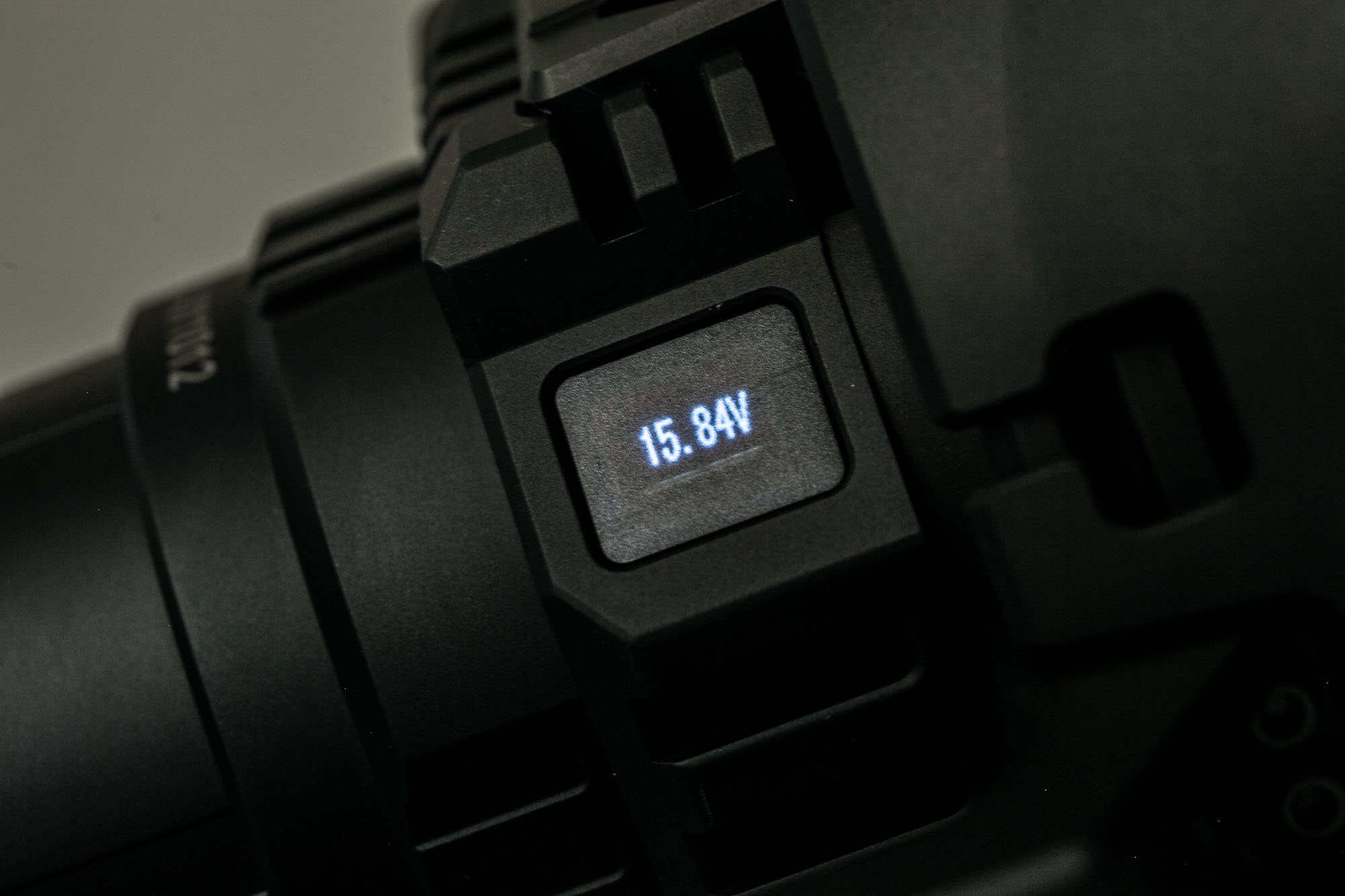
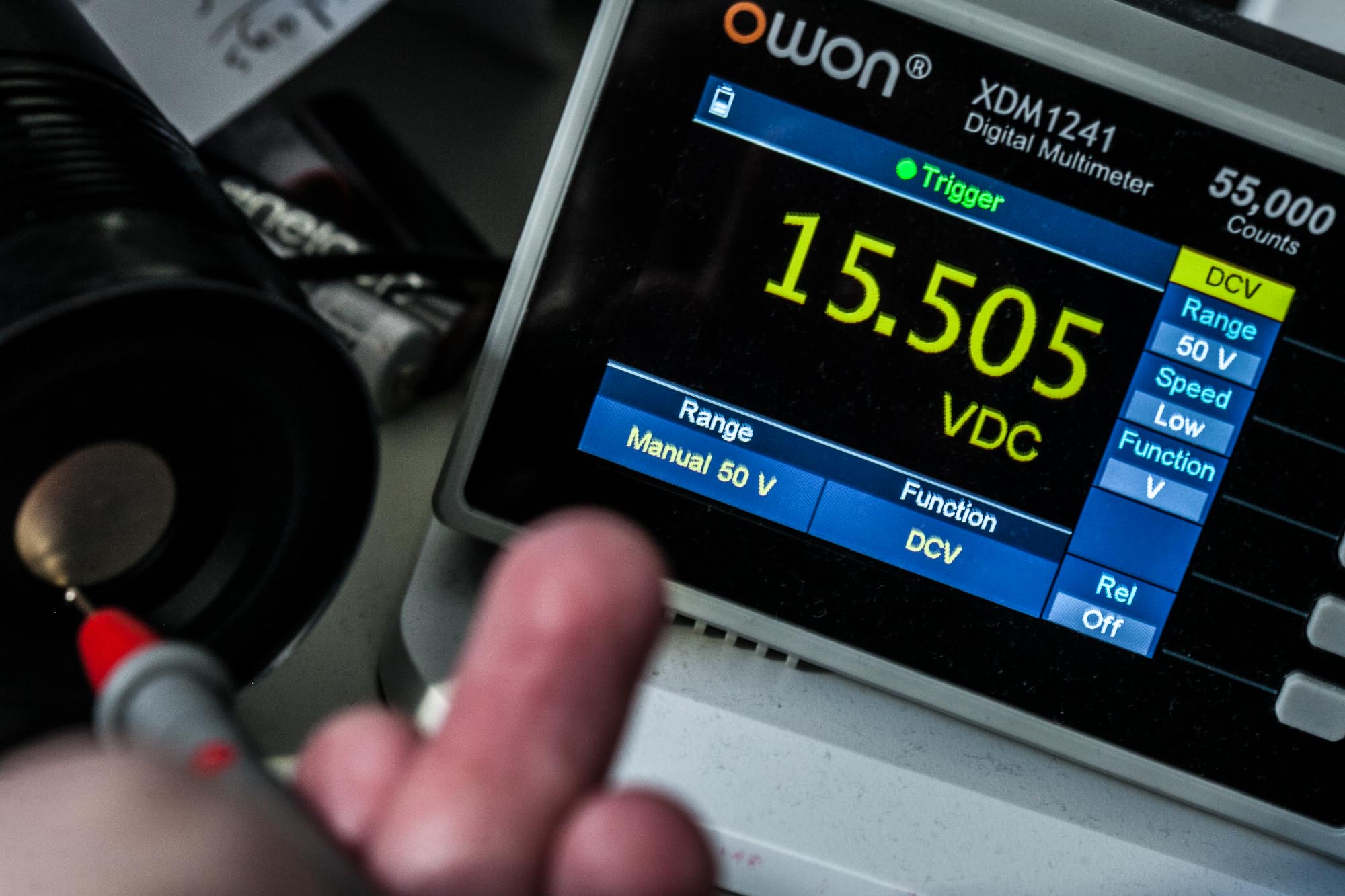
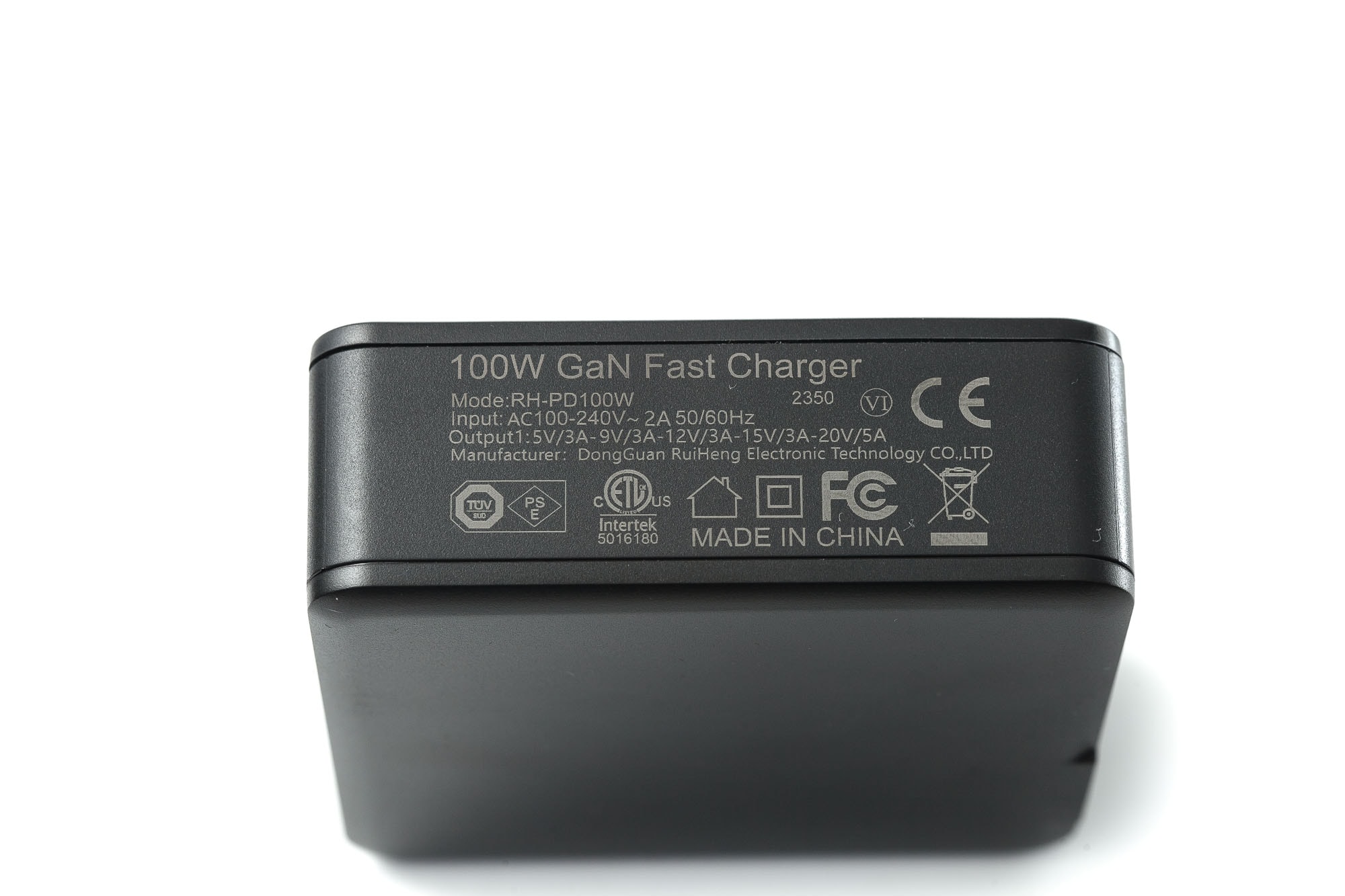
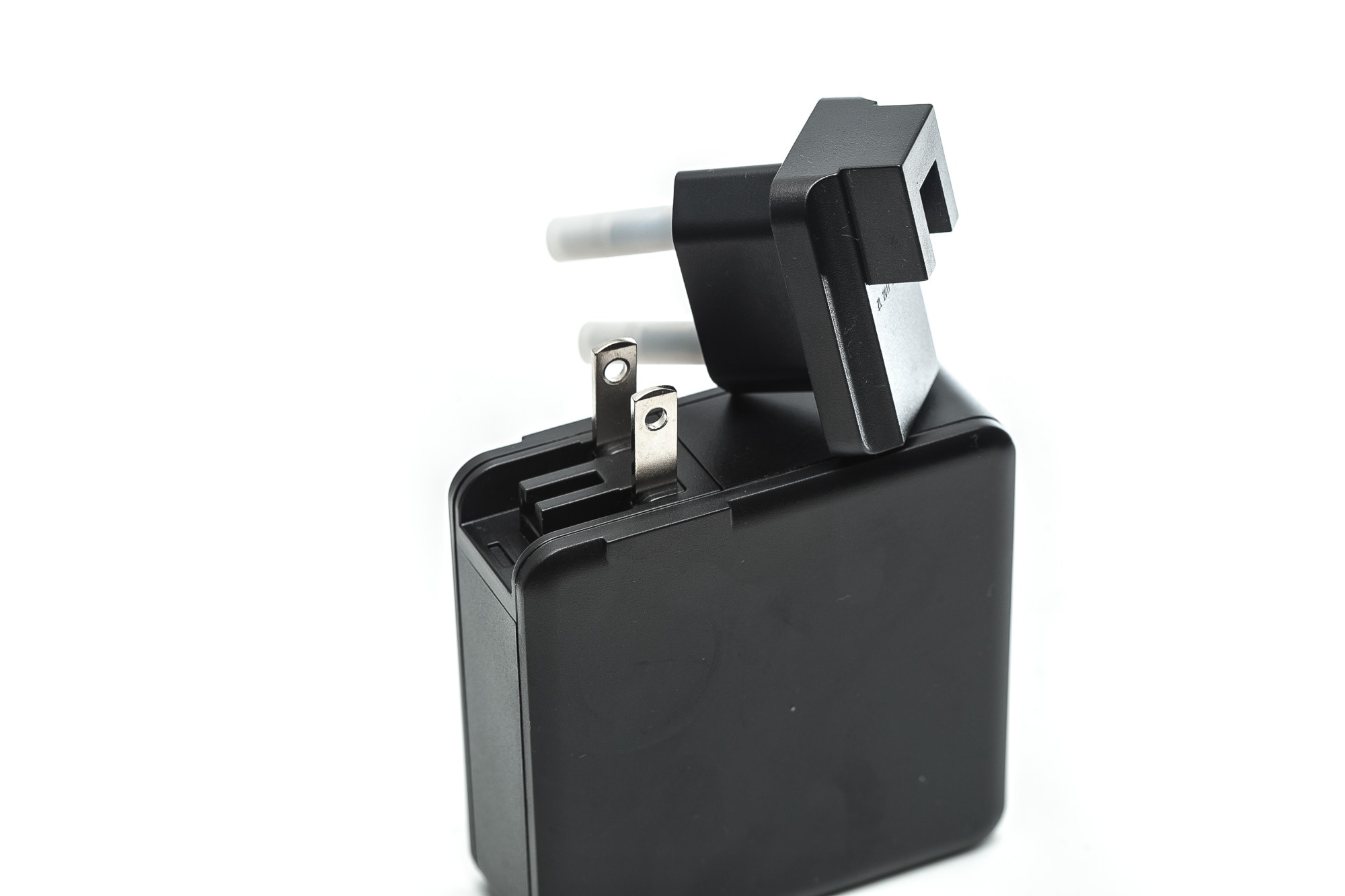
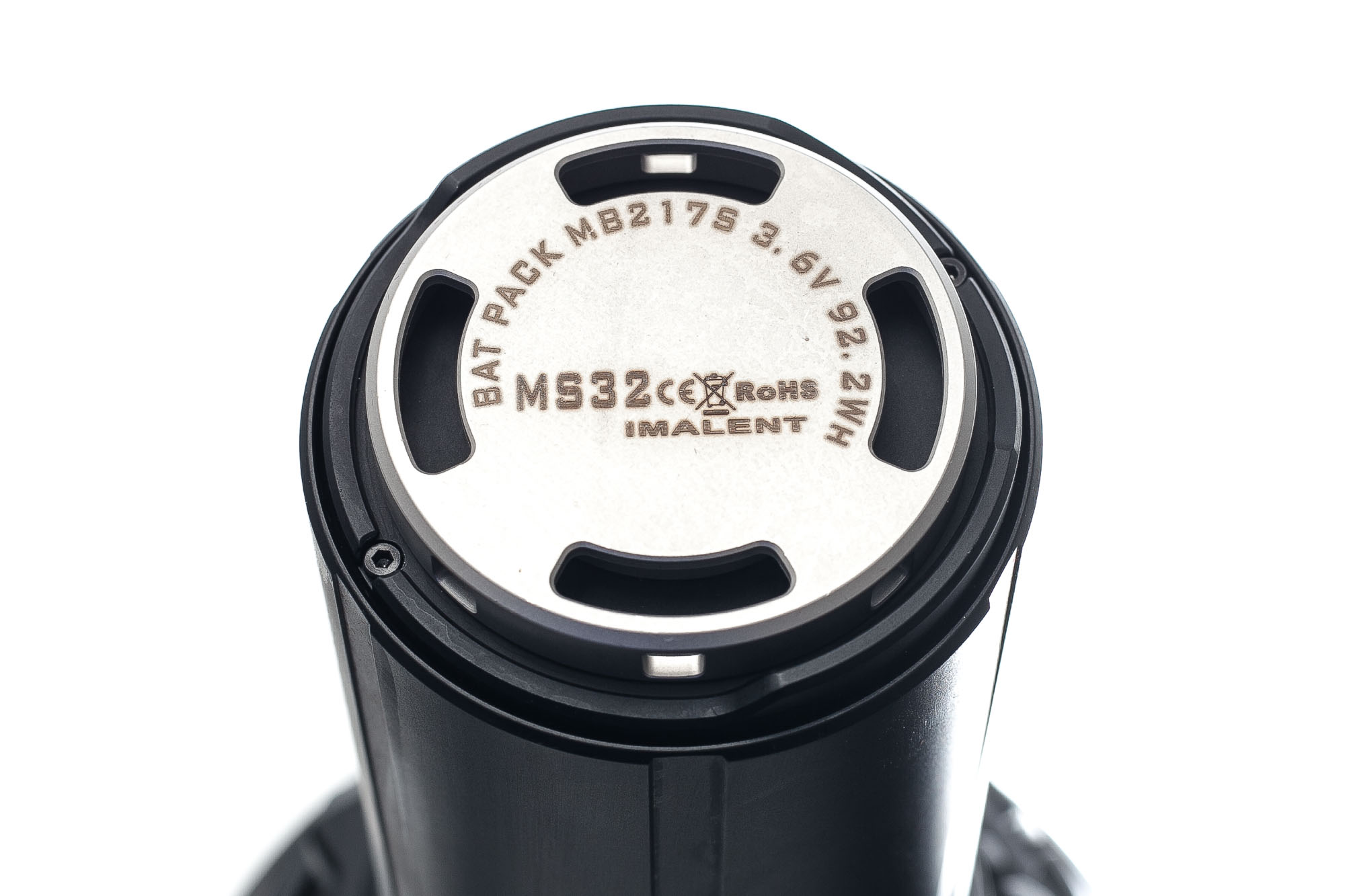
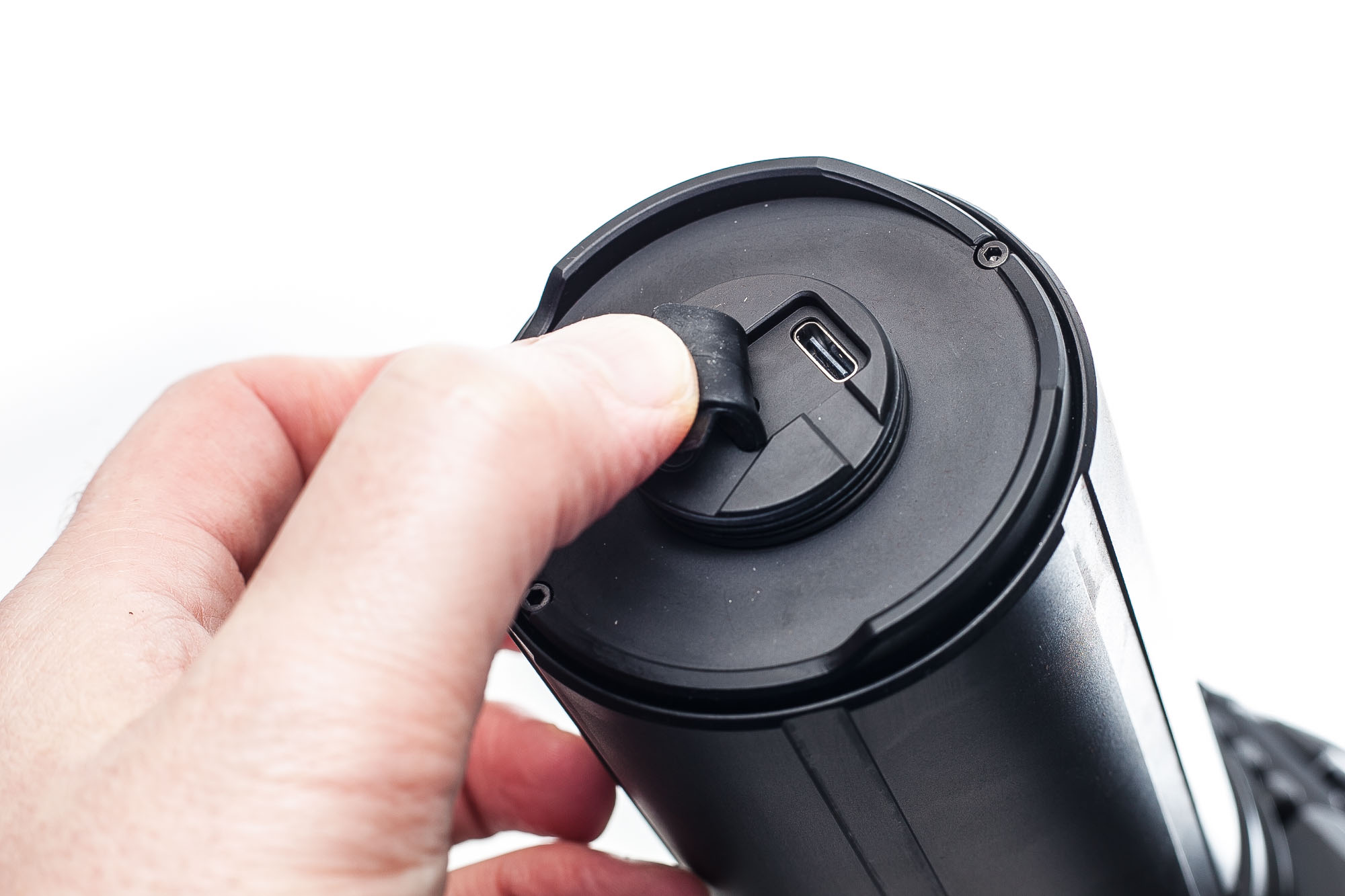
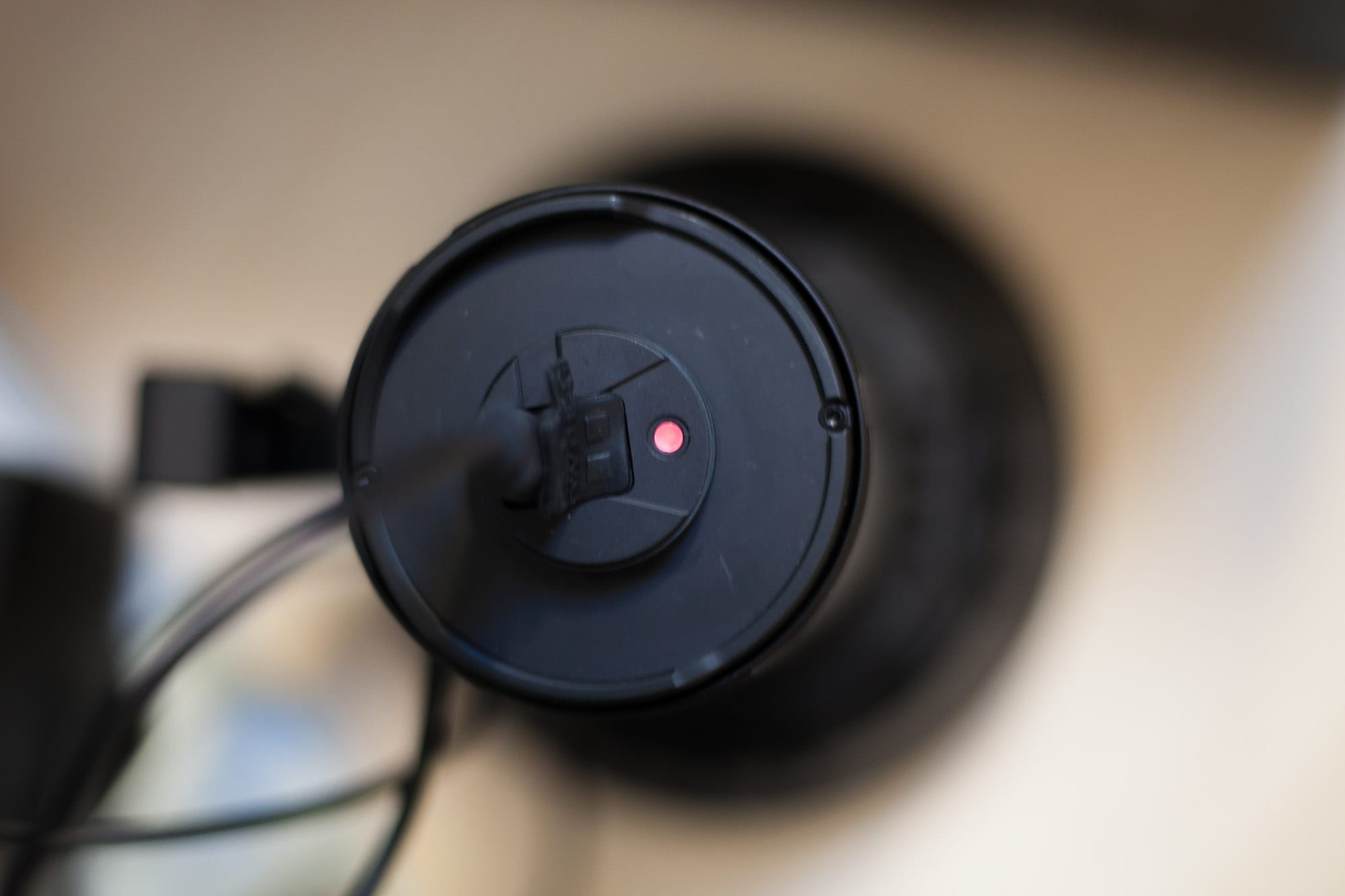
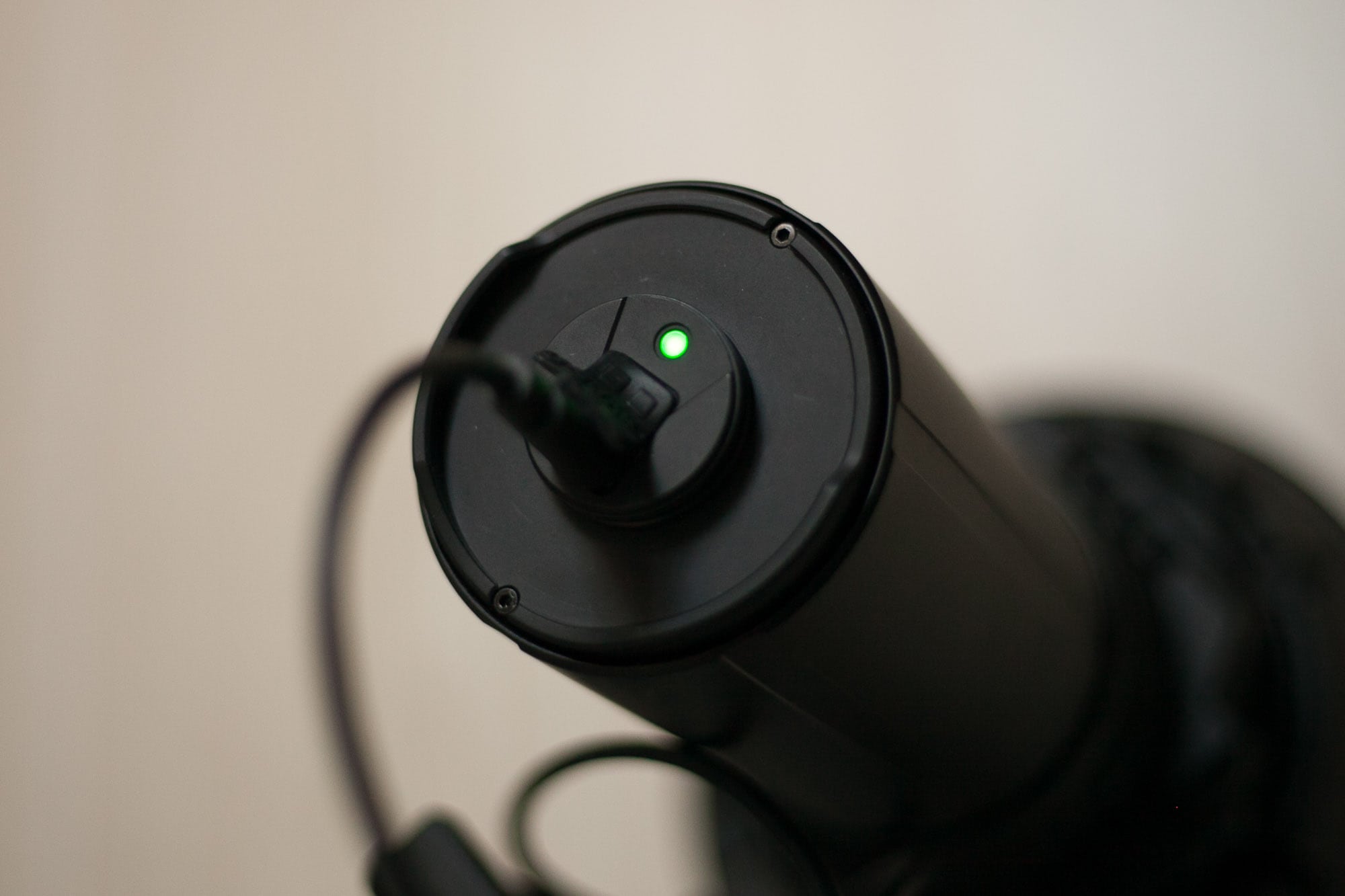
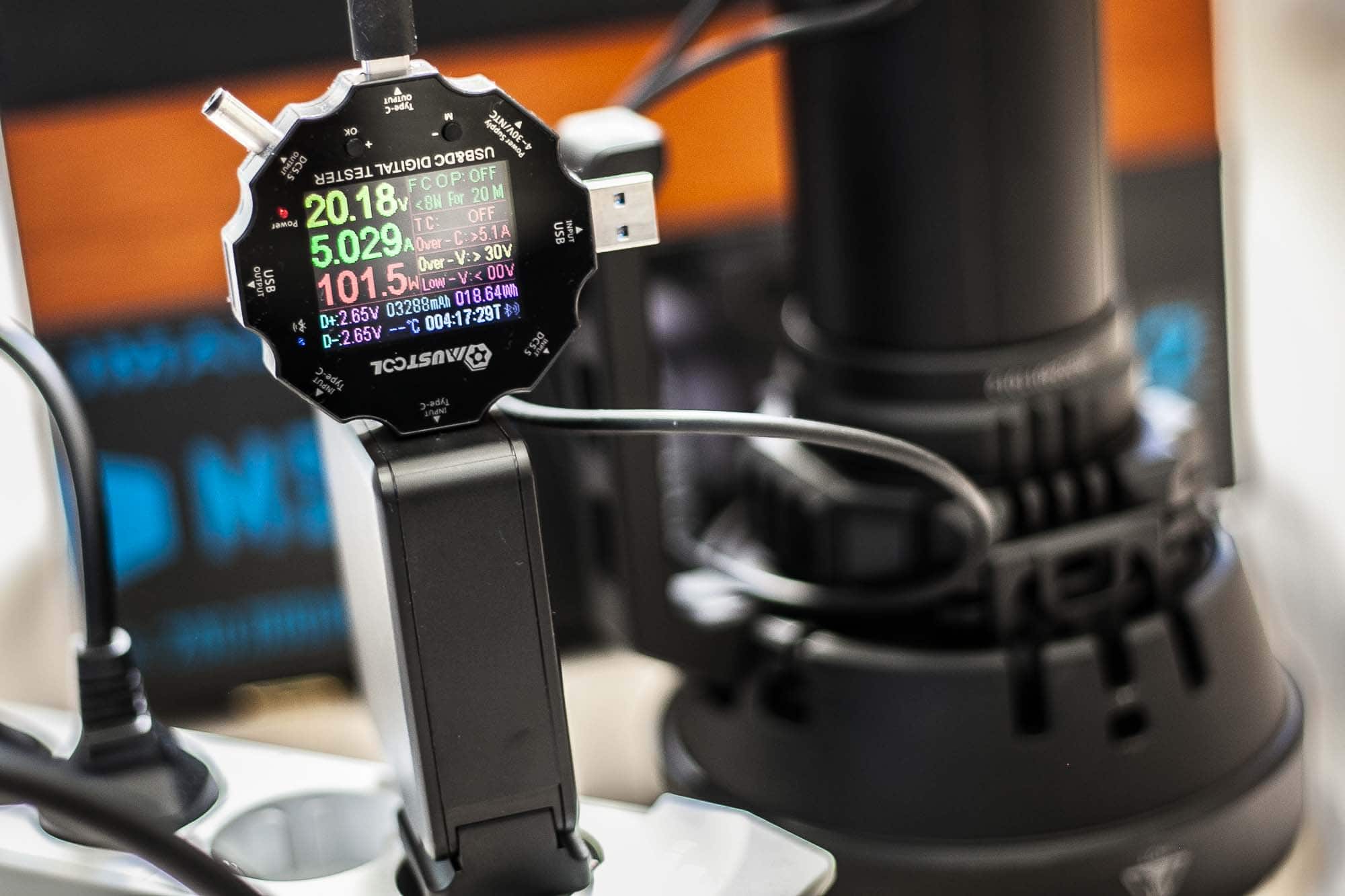
Imalent MS32 Performance test
This is the gear I use for testing:
| Gear | Purpose | Link to buy |
|---|---|---|
| Hagner E4-X | Measuring beam intensity (throw) | Inquire at Hagner.se |
| 2* Extech SDL400 | Lumens and logging runtimes | Amazon.com, Amazon.co.uk, |
| Leica Disto D2 | Distance for throw measurements | Amazon.com, Amazon.co.uk, |
| Sekonic C-800 | Spectrometer for LED measurements | Amazon.com, Amazon.co.uk |
| Uni-T UTi260B | Thermal Image camera | Amazon.com, |
Imalent MS32 Lumen measurements:
The output measurements in this review are based on my homemade integrating spheres, each equipped with an Extech SDL400 Lux Meter. For consistency and accuracy, a calibration light (Convoy S2+ with 249lm and a Convoy S2+ with 261lm) is measured before each set of lumen measurements.
One of the lux meters uses an ND camera filter for high-output lights to prevent the lux meter from maxing out. This is either the Kenko PRO1D ND16 for up to about 80,000 lumens or the Gobe ND32 for anything above.
All of my readings were taken with a fully-charged battery pack.
Unfortunately my sphere’s opening is too small to fit the head completely. So it blocked a bit of light entering the sphere. This, plus that the sphere may let some light through the styrofoam, you can easily add 5% or 10% on top of the output I measured.
The measurements were taken manually at turn on and 30 seconds. The 10-minute numbers are taken from the runtime graph. They were measured with the ND16 as well as with the ND32 filter. Te ND16 filter couldn’t read higher than High2. So the measurements are with the ND16 filter up to High 2, High 3 and Turbo are measured with the ND32.
| Mode | Specified | Turn on | 30 sec | 10min |
|---|---|---|---|---|
| Moon | 80 lm | 92 lm | 92 lm | – |
| Mid Low | 2000 lm | 1,787 lm | 1,787 lm | 1,719 lm |
| Mid 1 | 4000 lm | 3,675 lm | 3,668 lm | 3,597 lm |
| Mid 2 | 9000 lm | 8,420 lm | 8,395 lm | 8,255 lm |
| High 1 | 18000 lm | 18,881 lm | 18,881 lm | 18,278 lm |
| High 2 | 40000 lm | 36,051 lm | 35,924lm | 36,007 lm |
| High 3 | 100000 lm | 103,982 lm | 137,448 lm | 34,999 lm |
| Turbo | 200000 lm | 179,678 lm | 166,133 lm | 37,396 lm |
I try to use rounded lumen numbers, except for maybe Low or Moonlight/Firefly modes.
Imalent MS32 Battery life and runtime
How Runtimes are Measured: Understanding ANSI FL1 Standards About ANSI FL1 runtime standards: The runtime is measured until the light drops to 10% of its initial output (30 seconds after turning on). This does not mean that the flashlight is not usable anymore. The last column shows how long the light actually works till it shuts off. If there is a + symbol, it means that the test was stopped at that particular point, but the light was actually still running. This happens on certain occasions, with certain drivers, firmware, or batteries.Runtime tests were conducted in my 50cm homemade integrating sphere, paired with the Extech SDL400 data logging Lux Meter.
Runtimes were measured without the flashlight closing off the port of the sphere. Even at about 7 centimeters distance, it got the sphere melted at some parts. I used the manual measurements from my lumens measurements (which I did close the port) and calculated these with the runtime graphs. I usually measure Turbo manually at turn on, 30 sec, 60, 90, 120,150 to see where the output is the most stable, and use that for my runtime graph calculation.
| Mode | Specified | Measured runtime (ANSI FL1) | Time till shut off |
|---|---|---|---|
| Moon | 345h | – | – |
| Mid Low (17.0°C) | 18h | 18h 56min | 18h 56min |
| Mid 1 (15C) | 7h 30min | 7h 33min | 7h 33min |
| Middle 2 (19.2°C) | 3h 30min | 3h 14min | 3h 14min |
| High 1 (17.5°C) | 1h 35min | 1h 26min | 1h 26min |
| High 2 (17.5°C) | 45min | 40 min | 40 min |
| High 3 (17.7°C) | 70sec + 42min | 37 min | 37 min |
| Turbo* (18.5°C) | 45sec + 40min | 32 min | 32 min |
Low mode ambient started at around 17 degrees, but declined to about 13 degrees when it finished the runtime.
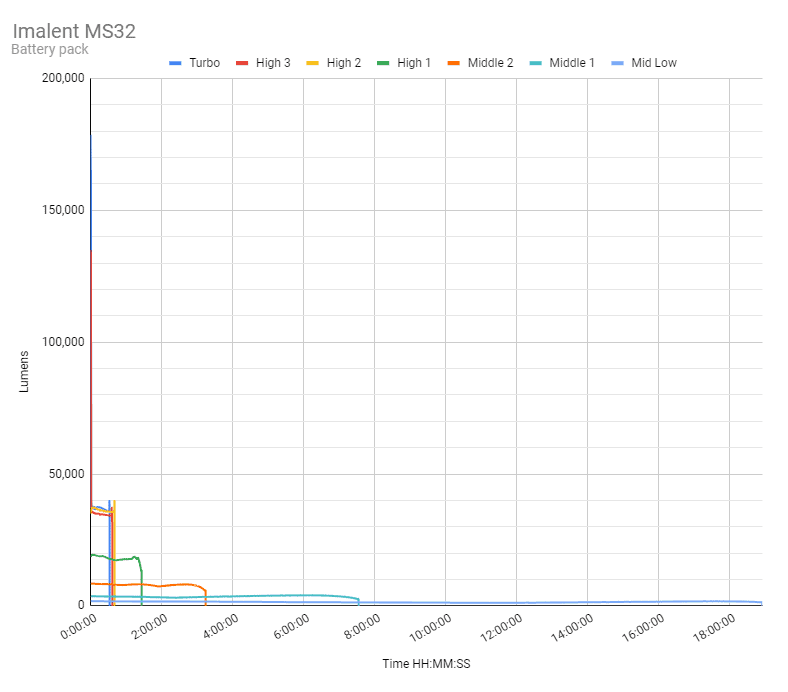
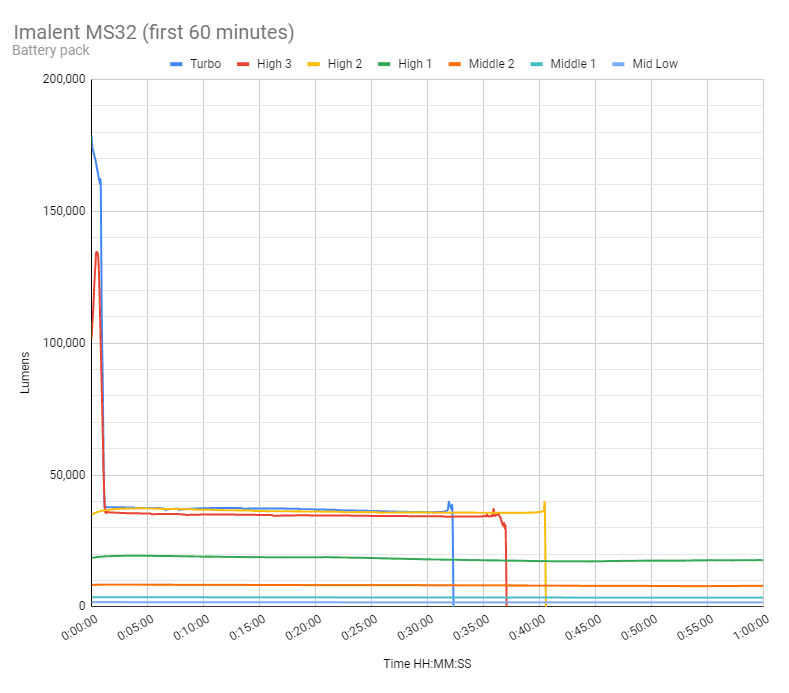
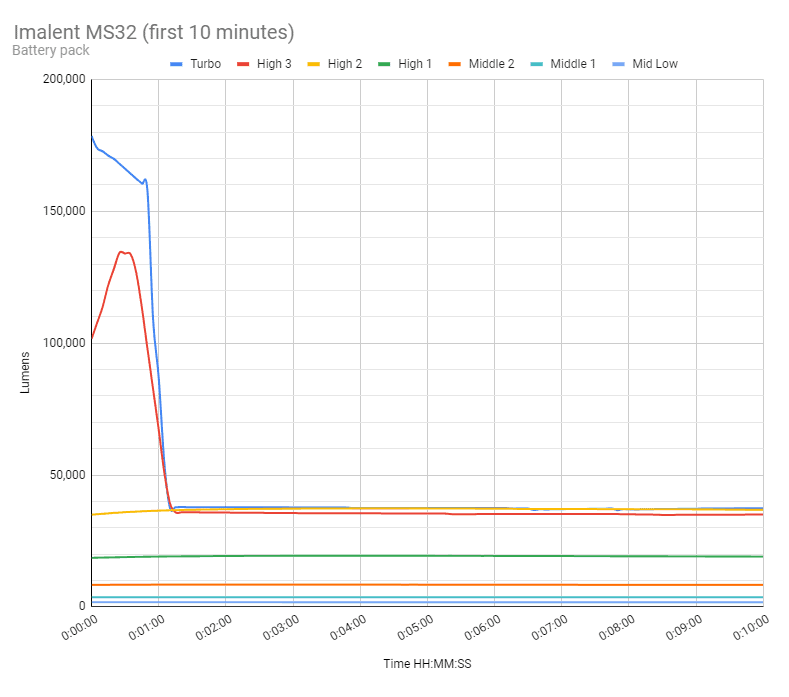
High 2 and Turbo show the number of seconds and then minutes. The seconds refer to the highest output before it drops to a lower level. In this example, High 2 and Turbo can reach the highest output for 70sec and 45sec before dropping down to High 1. The number of minutes should refer to the ANSI FL1 standards, meaning the runtime till the output reaches 10% of the initial measurement at 30 seconds. See the Lumen measurements above.
Scroll down for comparison graphs.
Thermal images
Turbo mode temperatures
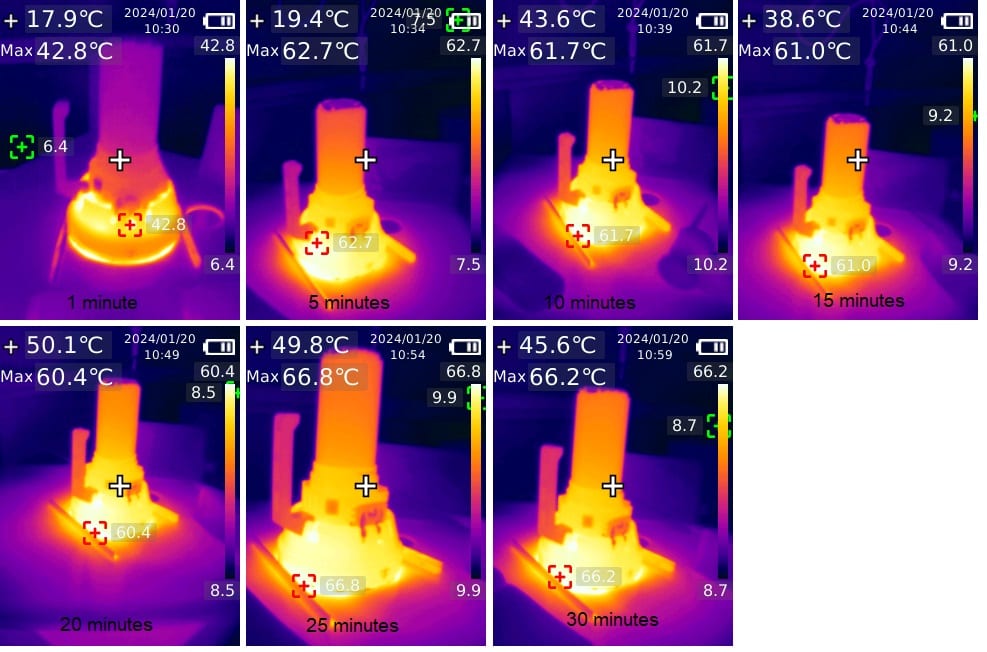
High 3 mode temperatures:
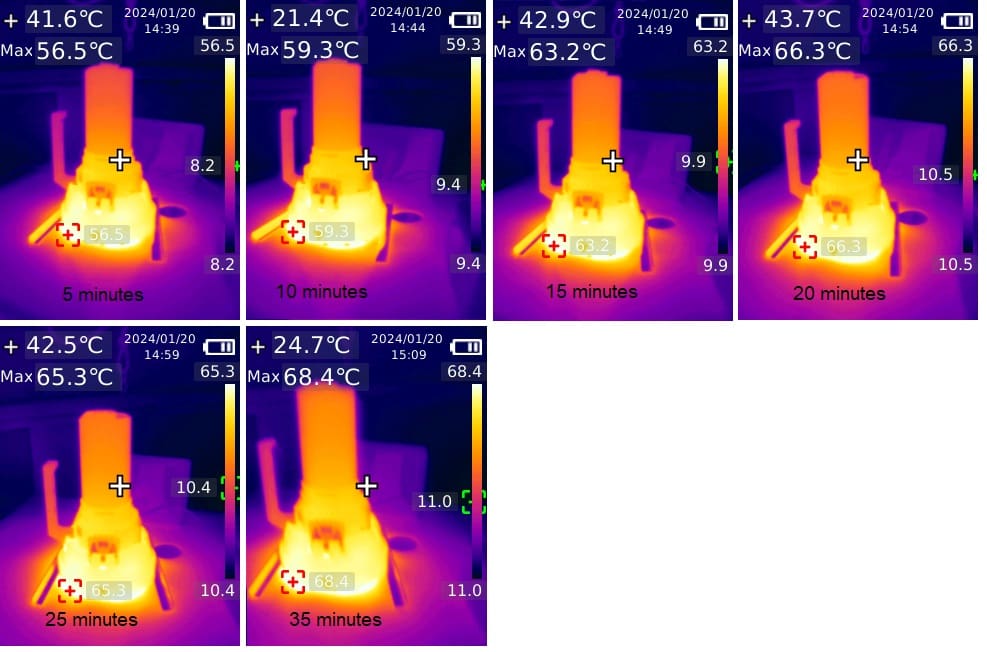
High 2 mode temperatures:
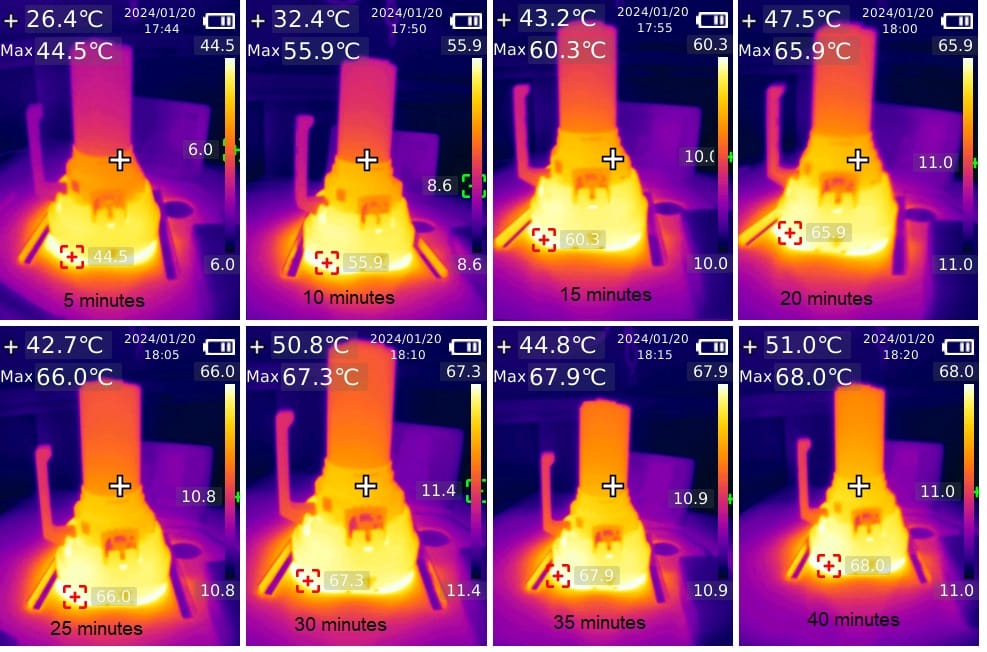
High 1 mode temperatures: (this mode does not use the fans)
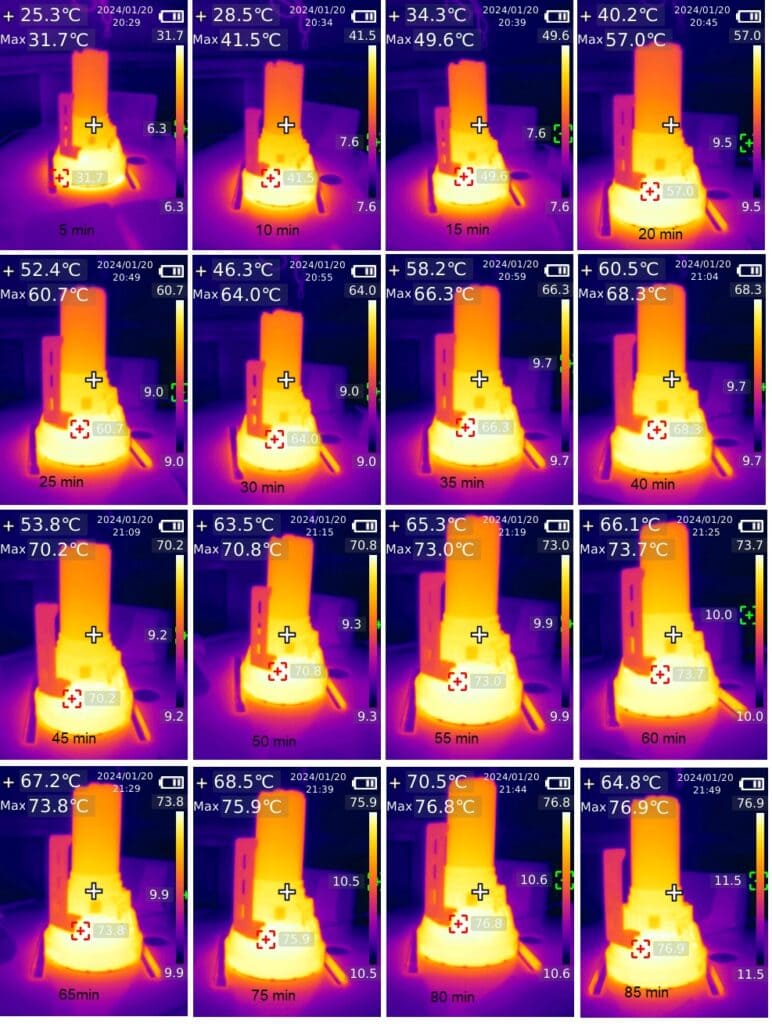
I didn’t test the flashlight with the sphere’s opening being sealed off, which would have likely increased the output above 100 degrees, just like the Imalent MS18. Instead I removed the top plate from the box where the sphere is in, and blow some air in the sphere so it does not melt my sphere or the glue on my ND filter, that’s attached to the sensor. So the MS32 does is not thermal controlled.
This could be good and bad at the same time. In normal use, outdoors, this is great, as it can sustain such a high output
But in some strange circumstances it could eventually heat up to above 100 degrees.
Note that I also double checked the temperatures with an Amazon 66IR360 Infrared Thermometer. This thermometer measured about 3-5 degrees celsius higher.
Imalent MS32 Peak beam intensity and beam distance measurements
About Peak beam intensity: Understanding ANSI FL1 Standards About peak beam intensity The calculated value of distance in meters at which the flashlight produces a light intensity of 0.25 lux. (0.25 lux is about the brightness of a full moon shining on an object). This means that the intensity has decreased so much, it becomes difficult to see darker objects, or objects that don’t reflect light. The columns ‘Meters’ and ‘Yards’ use rounded numbers.Measurements were taken indoors at 5 meters, with a Hagner E4-X Lux Meter. The measurements were taken 30 seconds after turn on. I also measured outdoors at 10 meters, with an ambient temperature of 5 degrees Celsius. But they measured slightly lower.
| Mode | Specified | Candelas | Meters | Yards |
|---|---|---|---|---|
| Moon | – | 300 cd | 35 m | 38 yd |
| Middle Low | – | 5,950 cd | 154 m | 169 yd |
| Mid1 | – | 12,375 cd | 222 m | 243 yd |
| Mid2 | – | 28,900 cd | 340 m | 372 yd |
| High1 | – | 64,500 cd | 508 m | 555 yd |
| High2 | – | 123,000 cd | 701 m | 767 yd |
| High3 | – | 427,250 cd | 1307 m | 1430 yd |
| Turbo | 655000 cd | 387,500 cd | 1245 m | 1362 yd |
| Turbo turn on | – | 672,500 cd | 1640 m | 1794 yd |
| Turbo 60sec | – | 115,000 cd | 678 m | 742 yd |
Indoor temperature was 17.5 degrees celsius.
It was hard to measure Turbo at turn on, as the meter jumped a few lux (times 100), and at the same time concentrating the center of the beam onto the sensor.
Turbo kept falling in output at the 30 second mark, so I also added the measurement for the 60 second s mark, because it was pretty stable at that point. And that’s probably what you will be using most of the runtime anyway. So you get about 700 meters / yards of beam with almost 40,000 lumens. Pretty incredible, and no other flashlight can do this.
Imalent MS32 vs Imalent SR32 vs Imalent MS18 vs Acebeam X75
Here is the first comparison image:
Even in High 1 mode, (without the fans) you get about the same output as the X75 (with fan), but then about 3 times as long. And about the same sustained output as the SR32 (with fans) but for twice as long. That’s pretty incredible.
The downside of the High1 is that in certain, extreme cases, you could heat up the flashlight too high, because there is no thermal control.
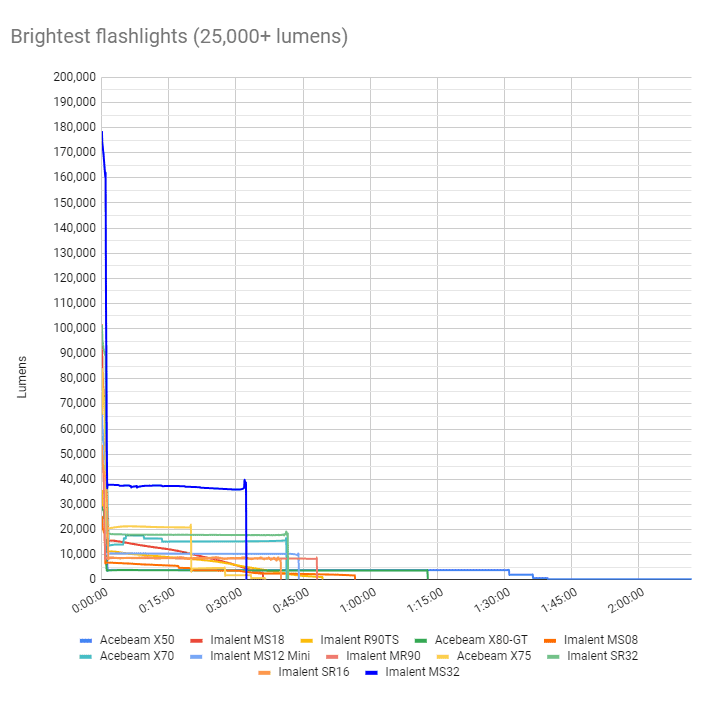
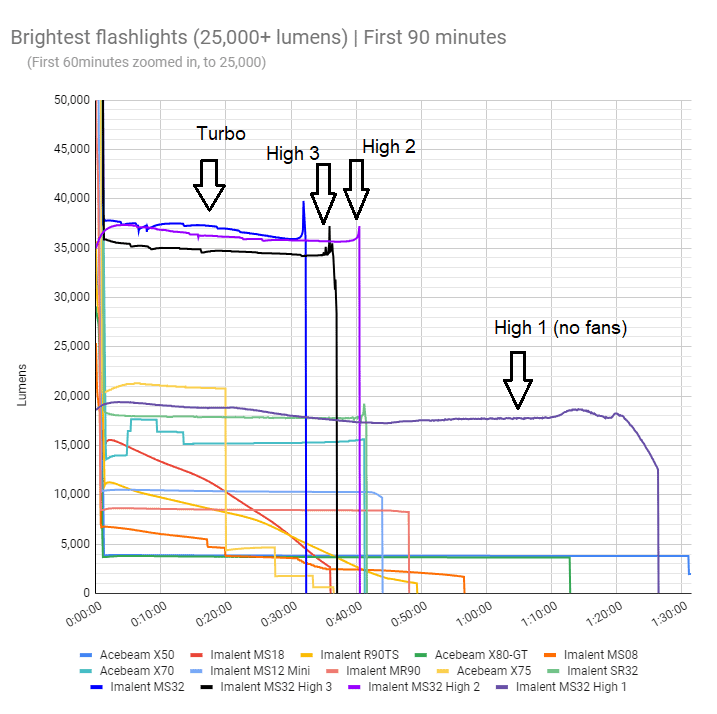
Compared to other powerful flashlights
Below is a list of the brightest flashlights we have reviewed with an output of over 50,000 lumens.
The following list contains our own measurements and not the manufacturer’s specs. The maximum output is usually measured at turn on, but sometimes after a couple of seconds. The 30-second measurement is according to ANSI FL1 standards, and the 10-minute measurement indicates its sustained output. Discontinued flashlights will be removed from the list.
| Flashlight | Max. Output | 30 sec | 10 minutes |
|---|---|---|---|
| Acebeam X75 | 83,607 | 73,716 | 21,061 |
| Haikelite HK08 | 64,447 | 59,727 | 3,985 |
| Imalent MR90 | 52,326 | 32,128 | 8,574 |
| Imalent MS08 | 25,745 | 19,615 | 6,049 |
| Imalent MS12 Mini | 68,773 | 46,750 | 10,454 |
| Imalent MS18 | 101,626 | 69,879 | 13,365 |
| Imalent MS32 | 179,678 | 166,133 | 37,396 |
| Imalent SR16 | 53,657 | 43,115 | 8,956 |
| Imalent SR32 | 101,532 | 91,014 | 17,960 |
| Flashlight name | Lumens | Lumens | Lumens |
Hover your mouse over any particular line in the following graphs to see data points! Or select a flashlight at the bottom of the graph to highlight that particular graph.
Are you on a mobile phone? Hold your phone horizontally.
(Interactive graphs)
Full runtimes:
Or check this link to view the full interactive chart.
Zoomed in for the first 10 minutes
Or check this link to view the 10 minutes interactive chart.
Beamshots
For the twer beamshots, I used a Canon EOS 5D mk2 with a 100mm lens. Manual settings: ISO1600, 0.5sec, F4, 5000K. The tower is about 450 meters / 492 yards away.
For the shed and reflective fence beamshots, I used a Canon EOS 5D Mk2 with a 50mm lens. Manual settings: ISO1600, 1/4sec, F4, 5000K. The shed is about 65 meters / 71 yards away, and the reflective fence is about 200 meters.
Explore and compare the beamshots from the following flashlights:
- Imalent MS32
- Imalent SR32
- Imalent MS18
- Acebeam X75
- Imalent MS12 Mini
- Imalent SR16
Please note that the following beamshots are mainly intended to showcase the beam pattern and beam quality, rather than overall performance. These images are typically taken directly after activation, and in different seasons or weather conditions, and therefore do not fully represent its overall performance. For accurate performance metrics, such as output, beam distance, and runtimes, you need to look at the performance section of this review.
Kind of useless with these settings, but just for fun:
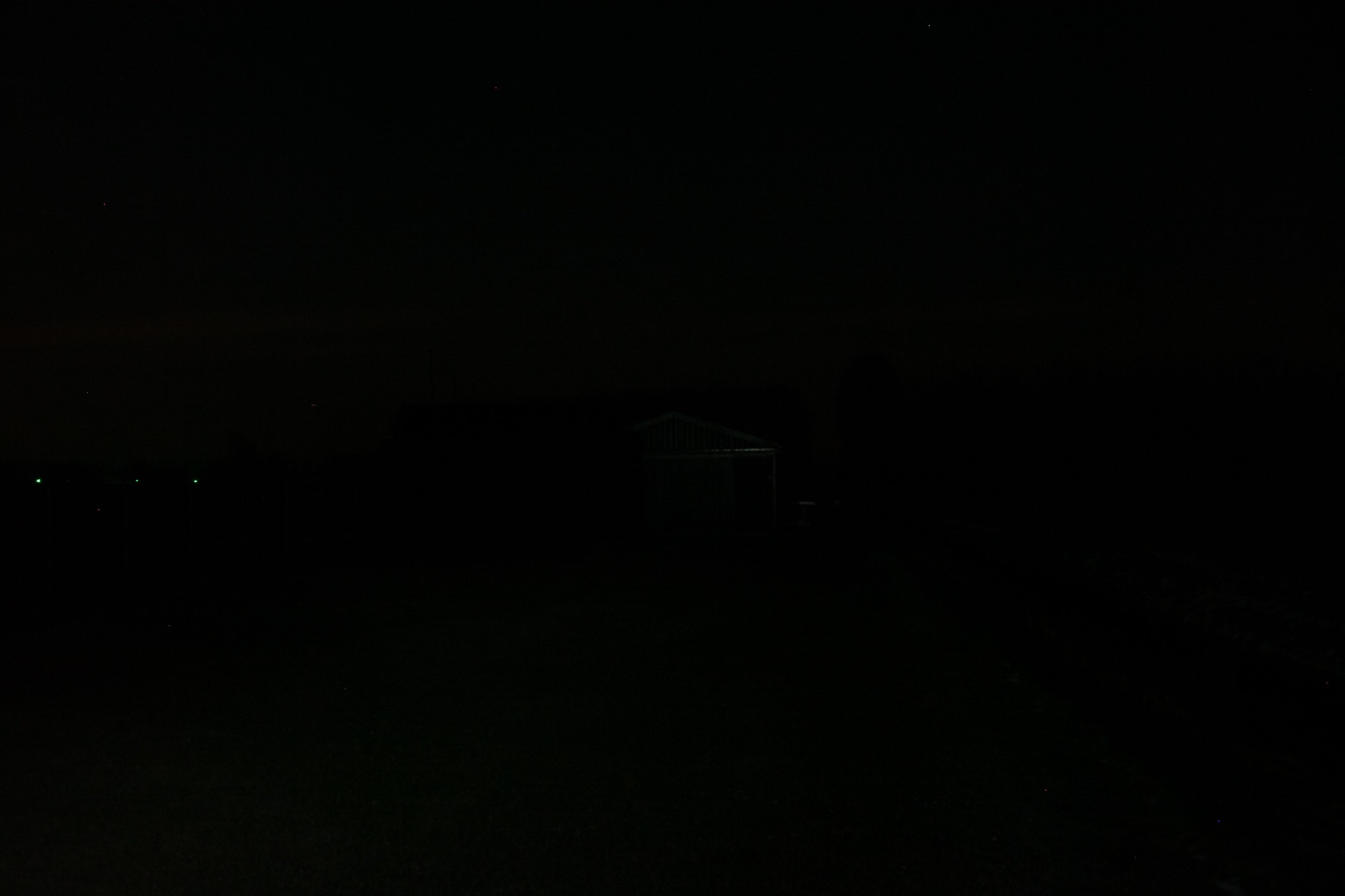
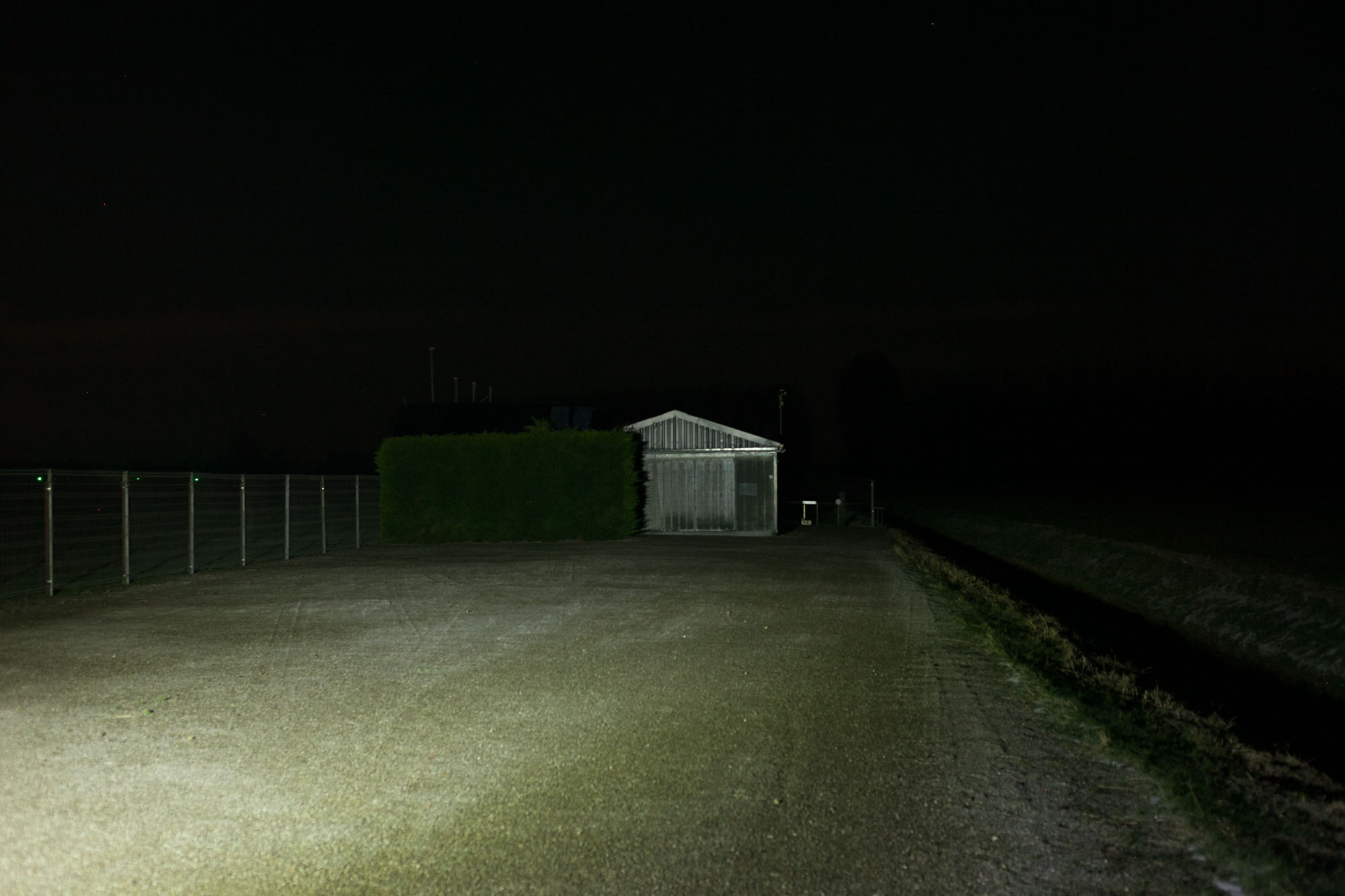
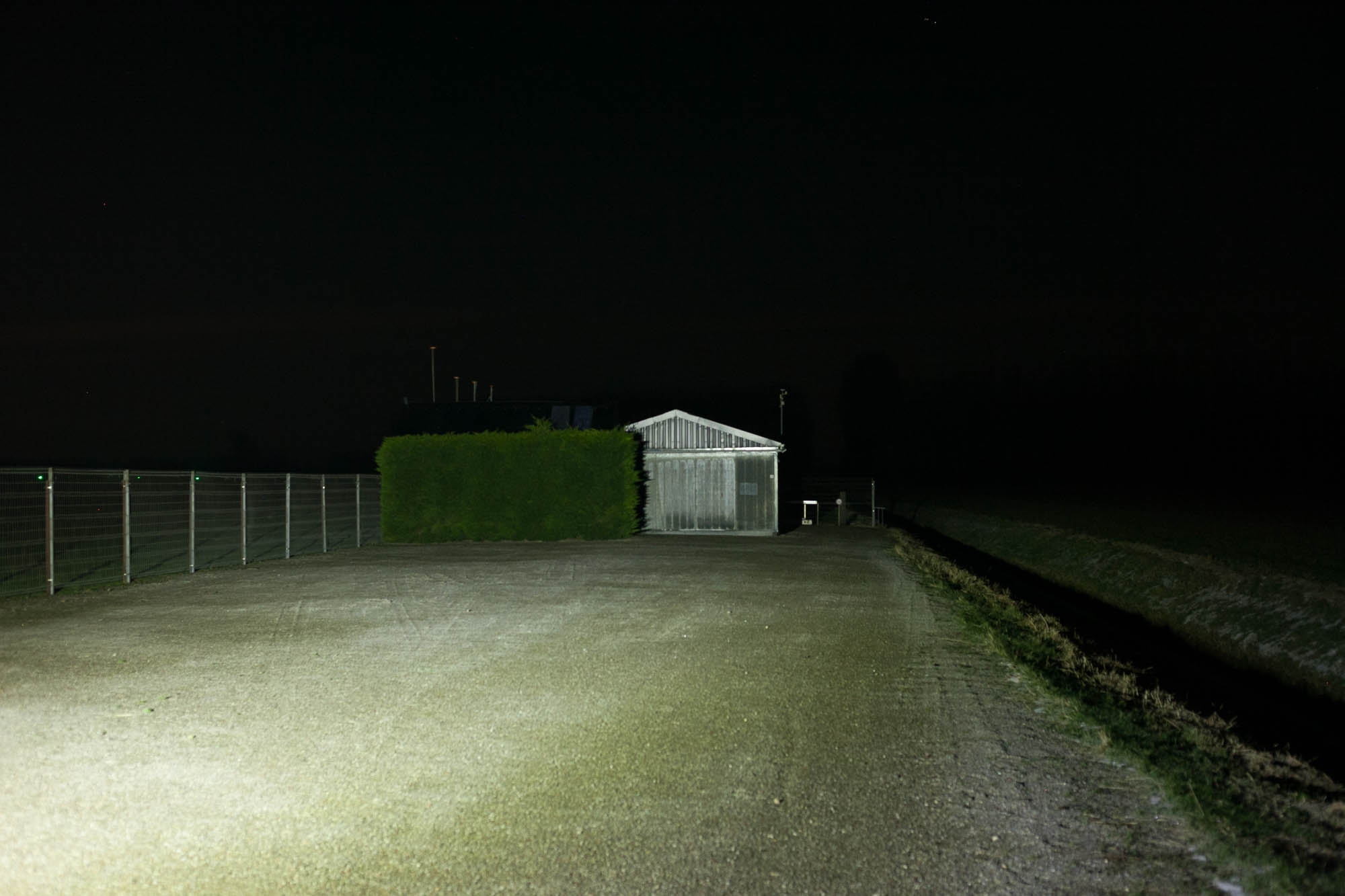
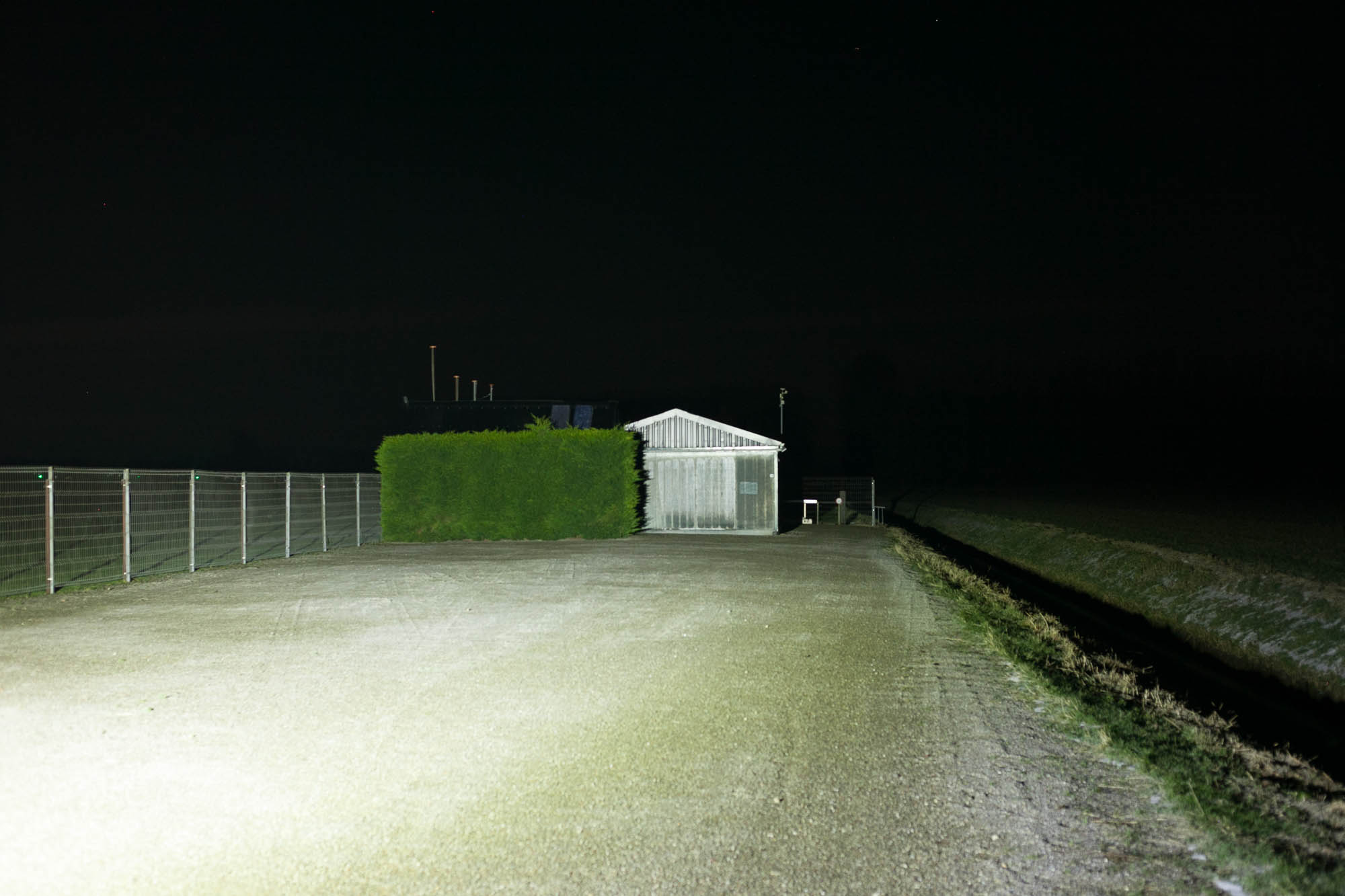
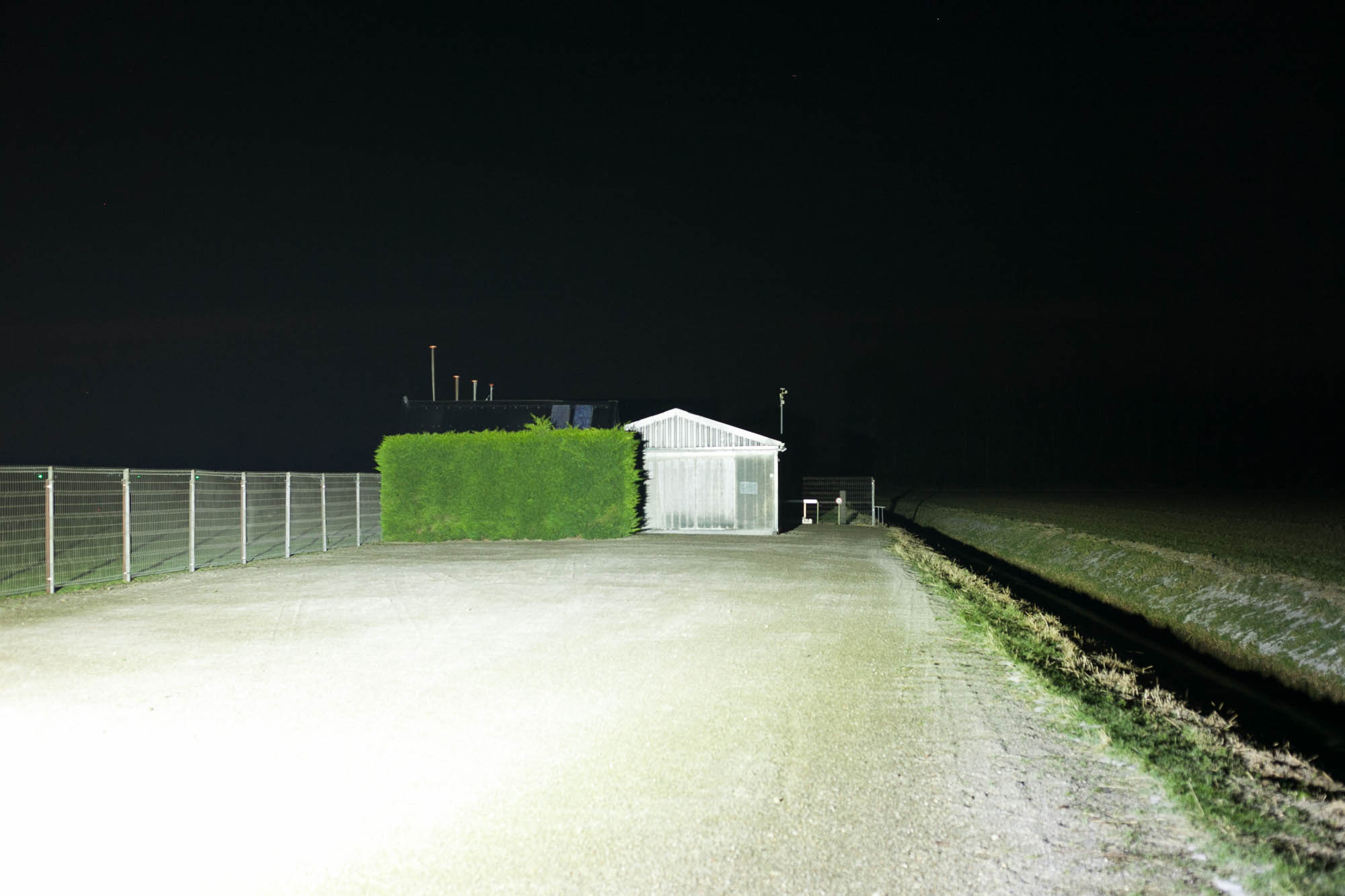
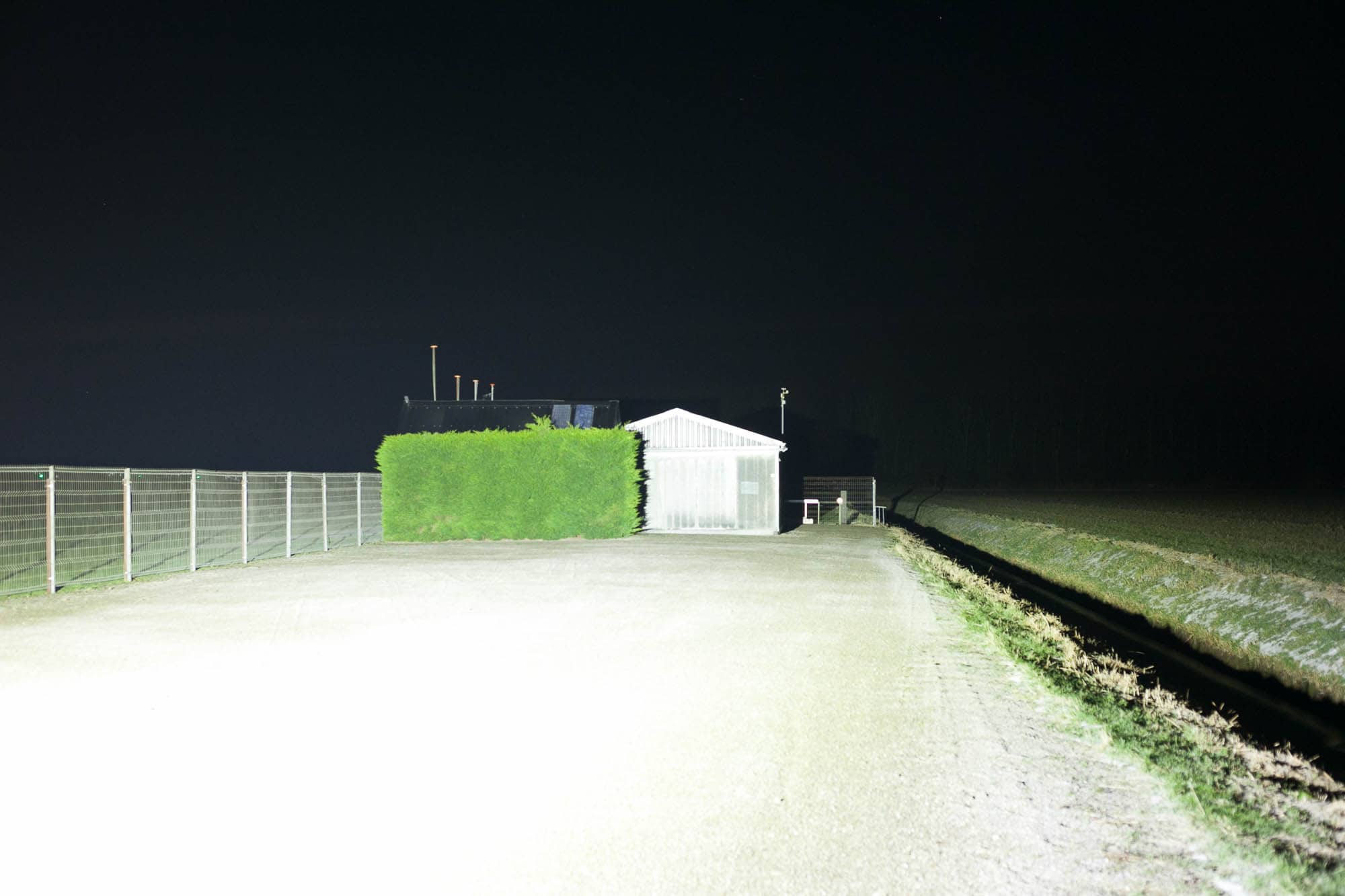
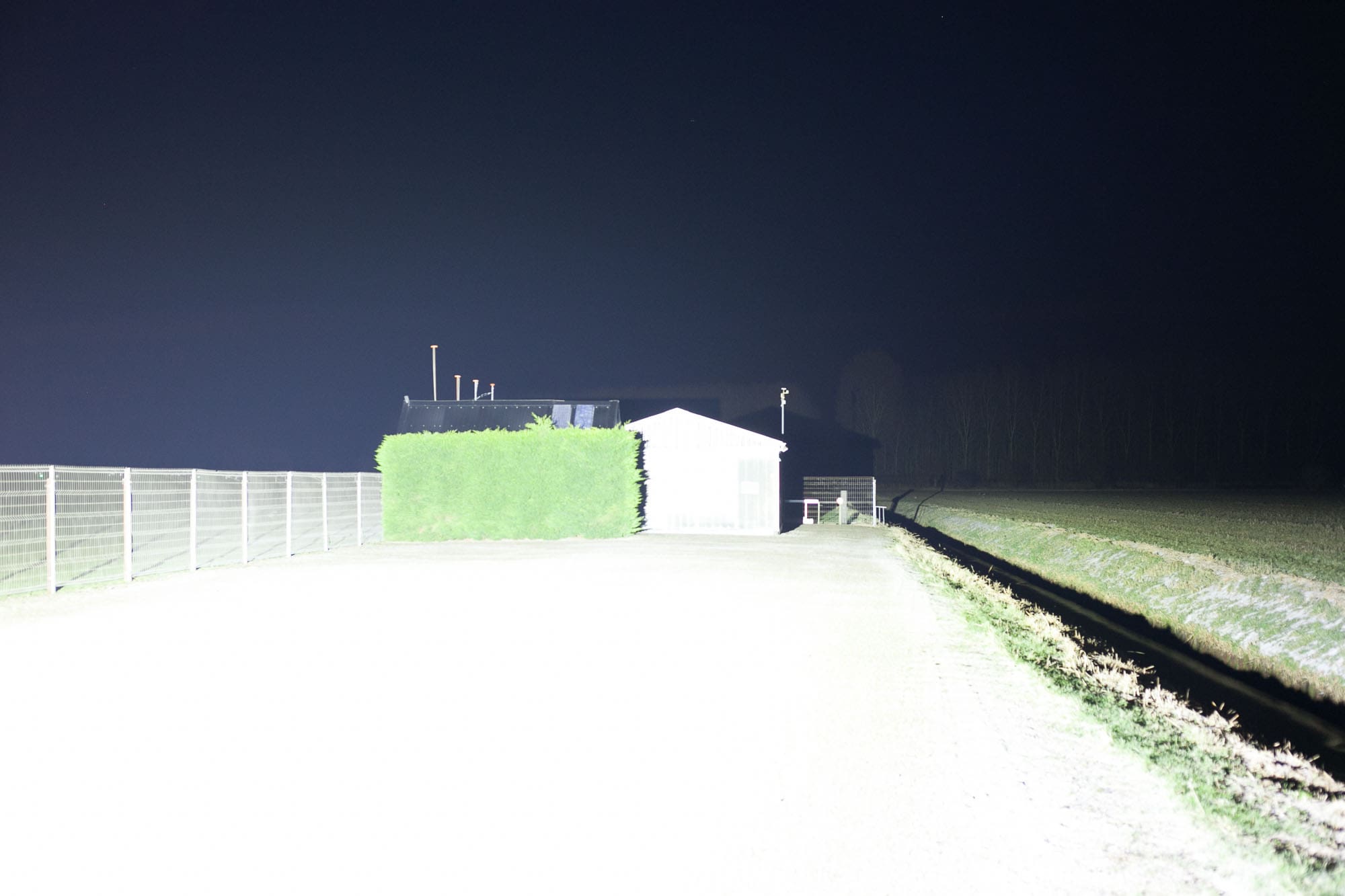
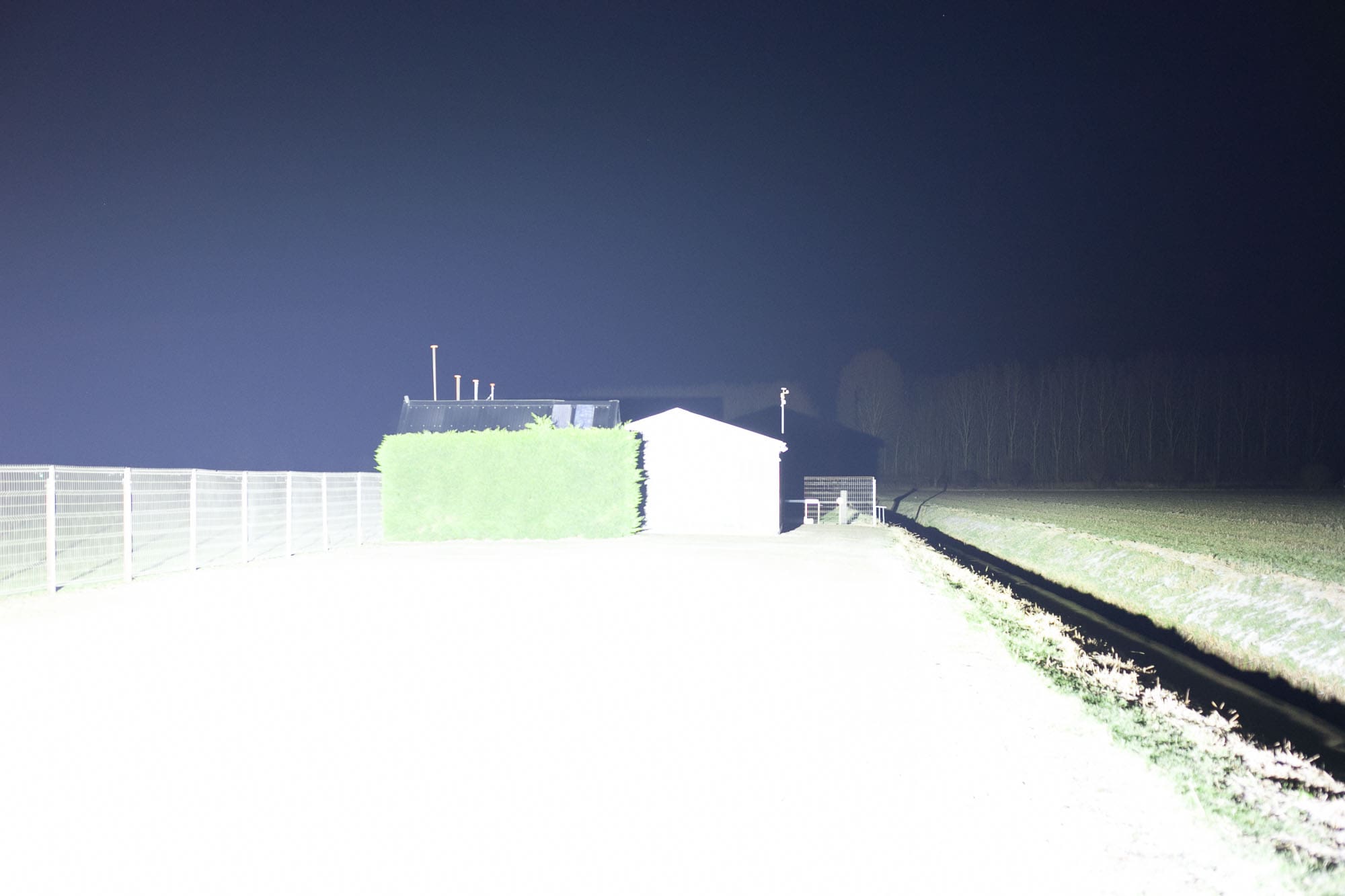
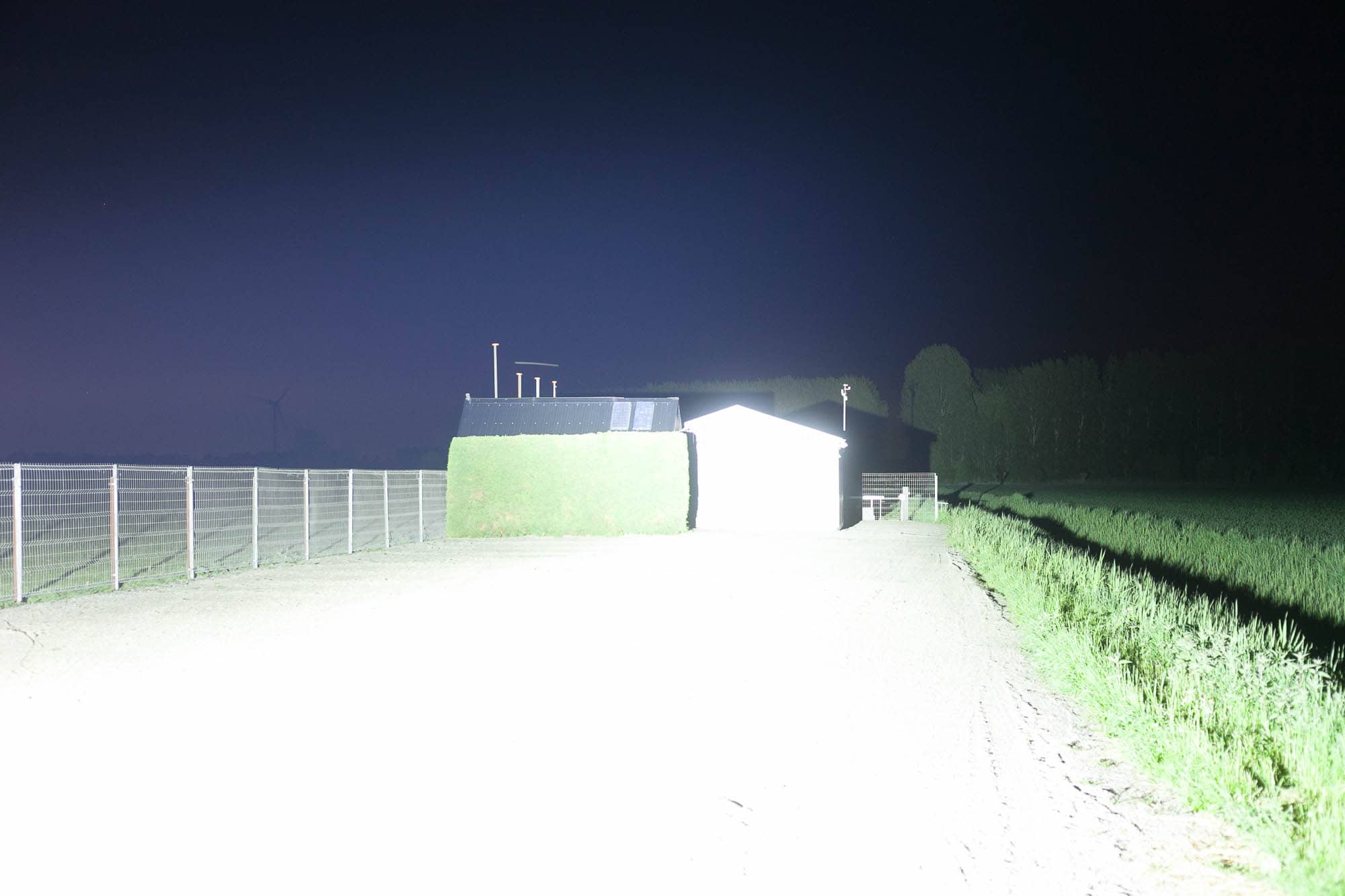
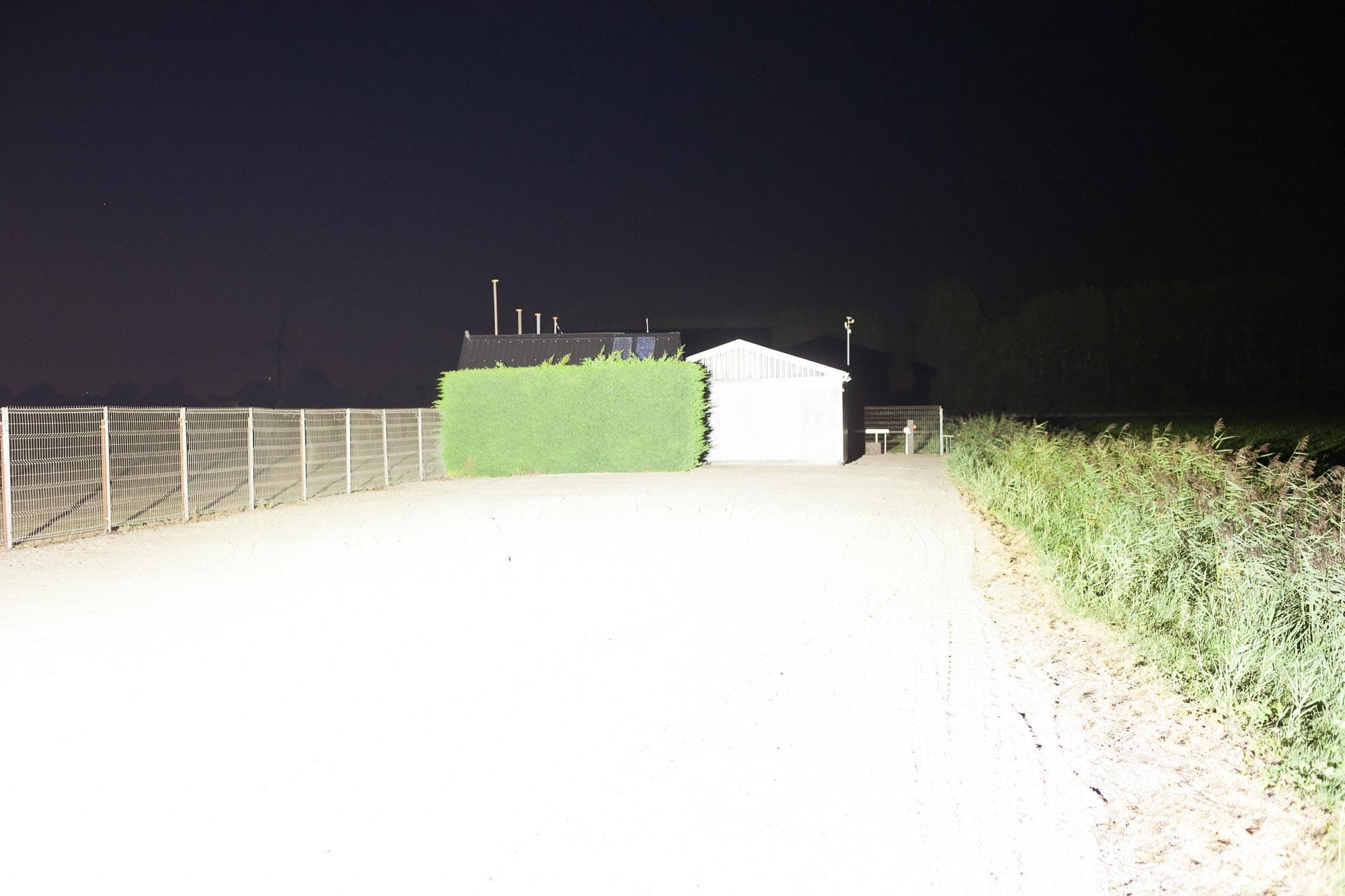
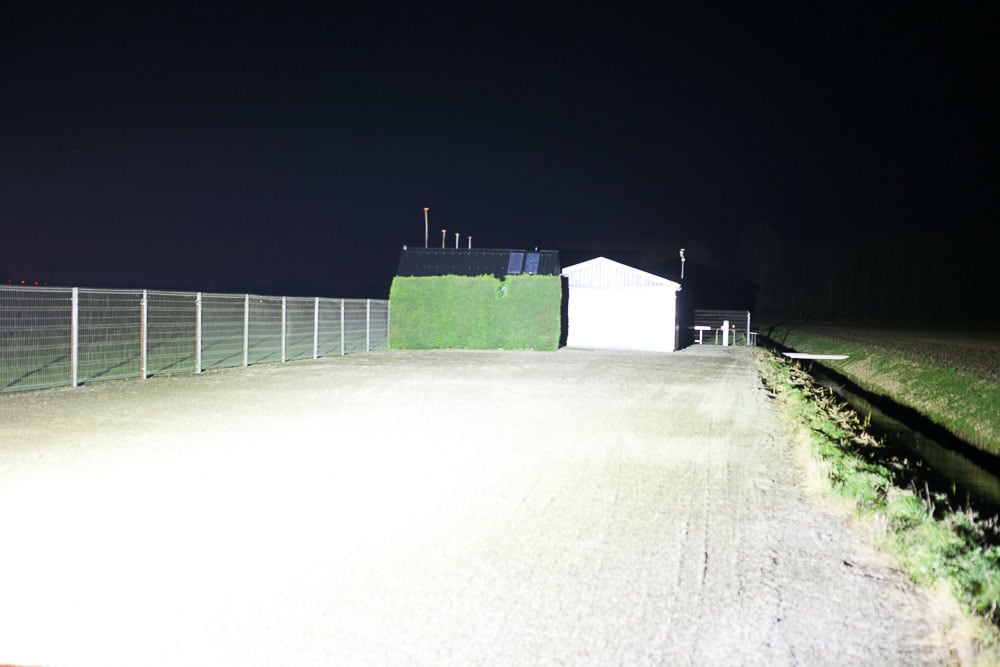

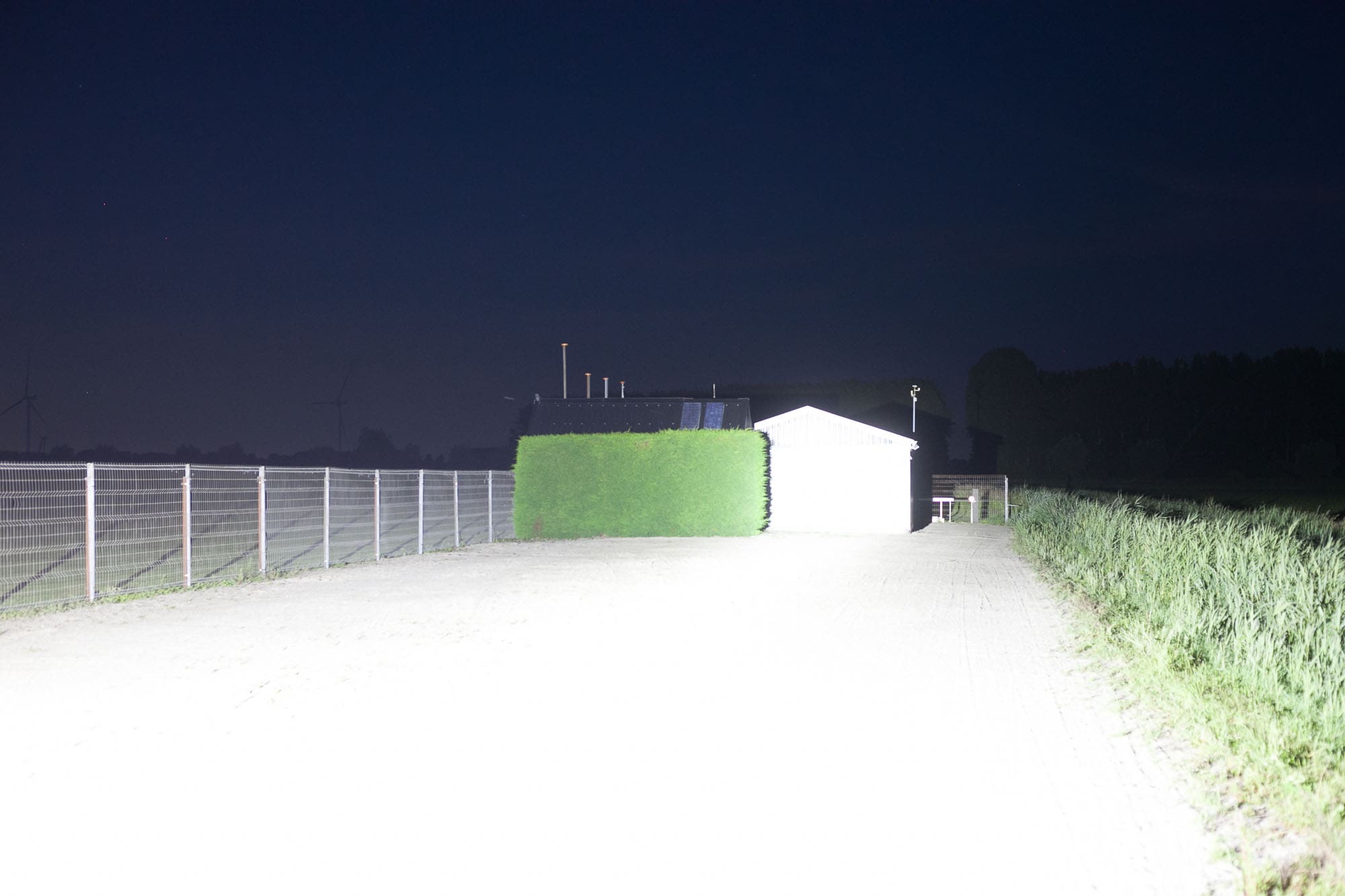
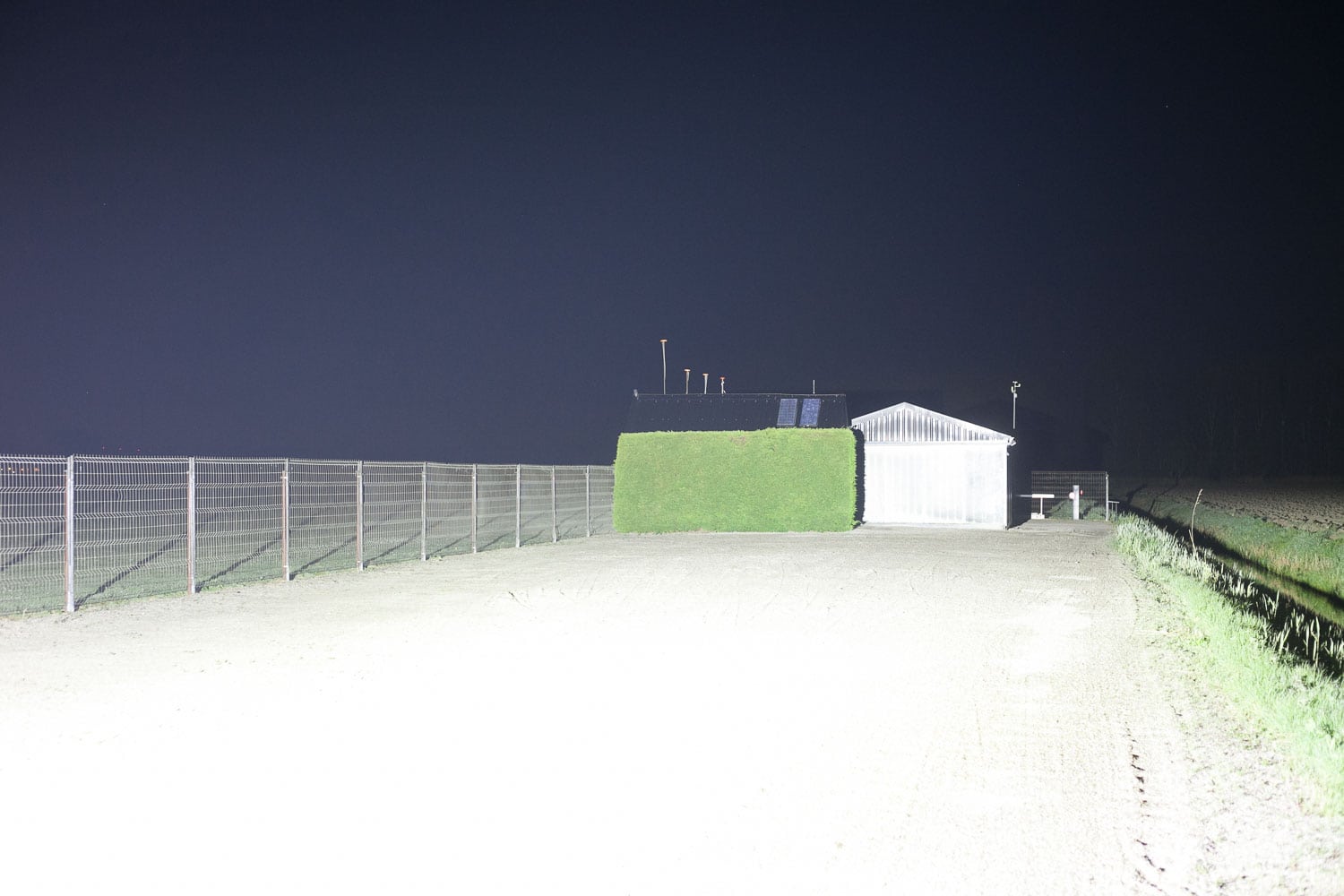
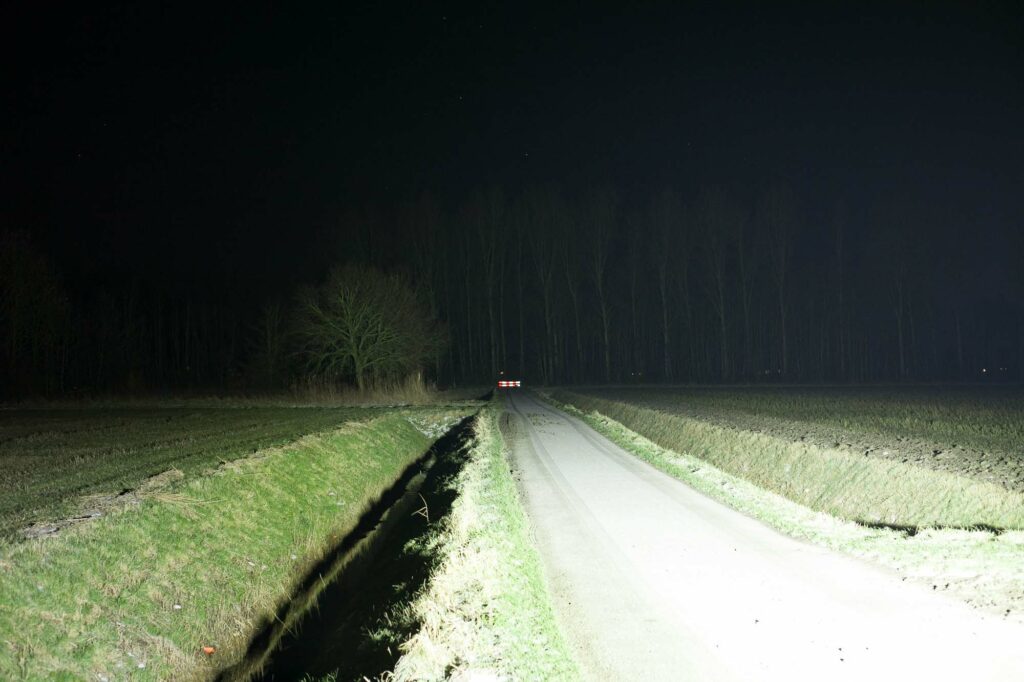
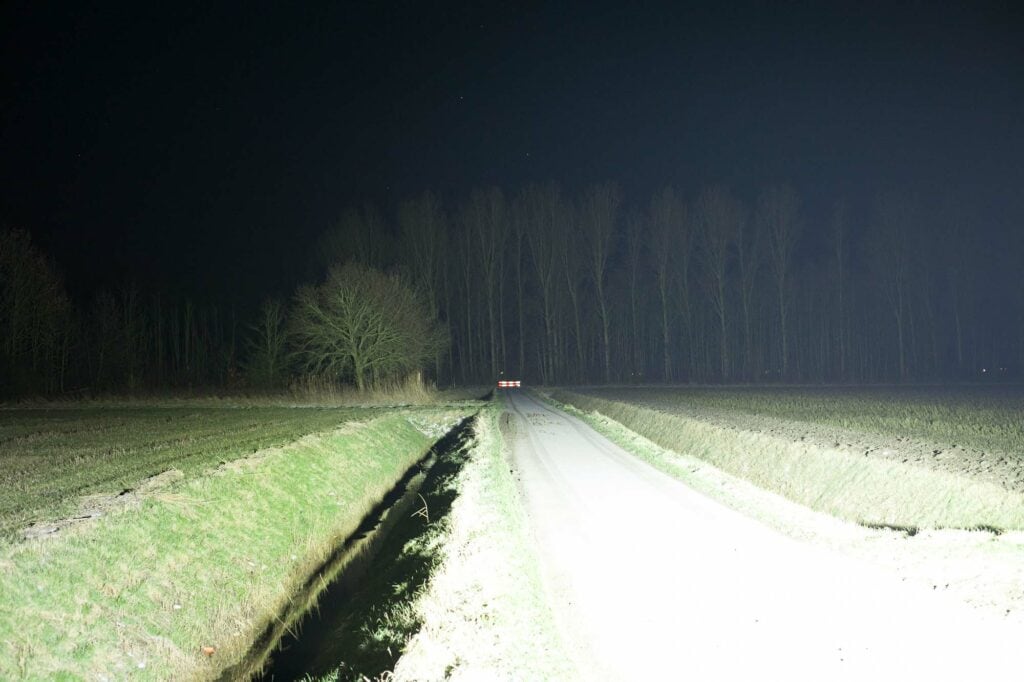
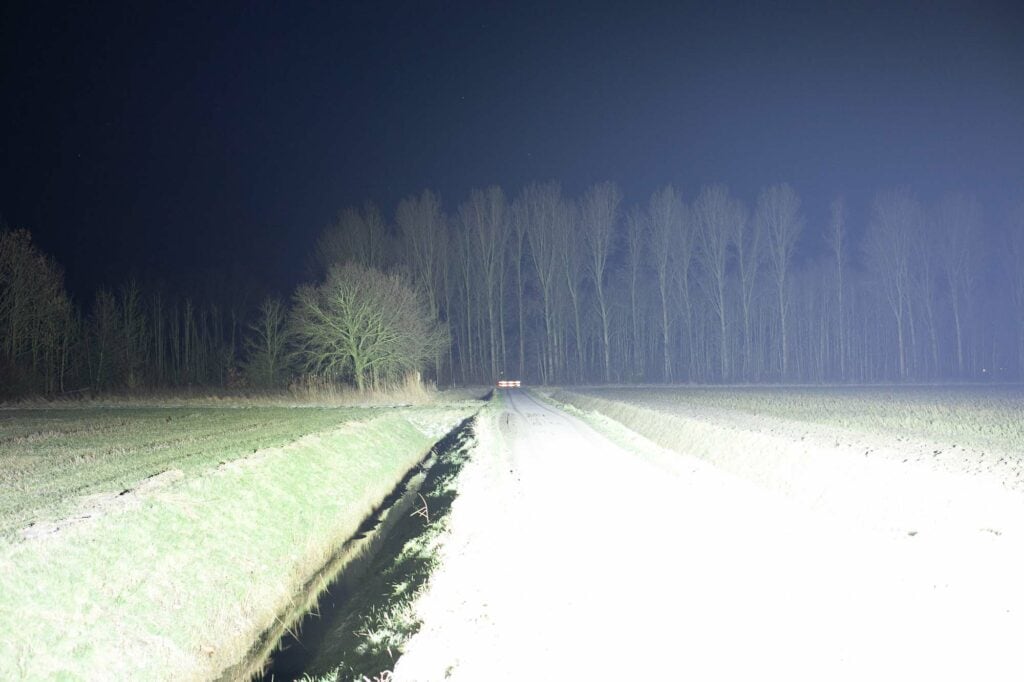

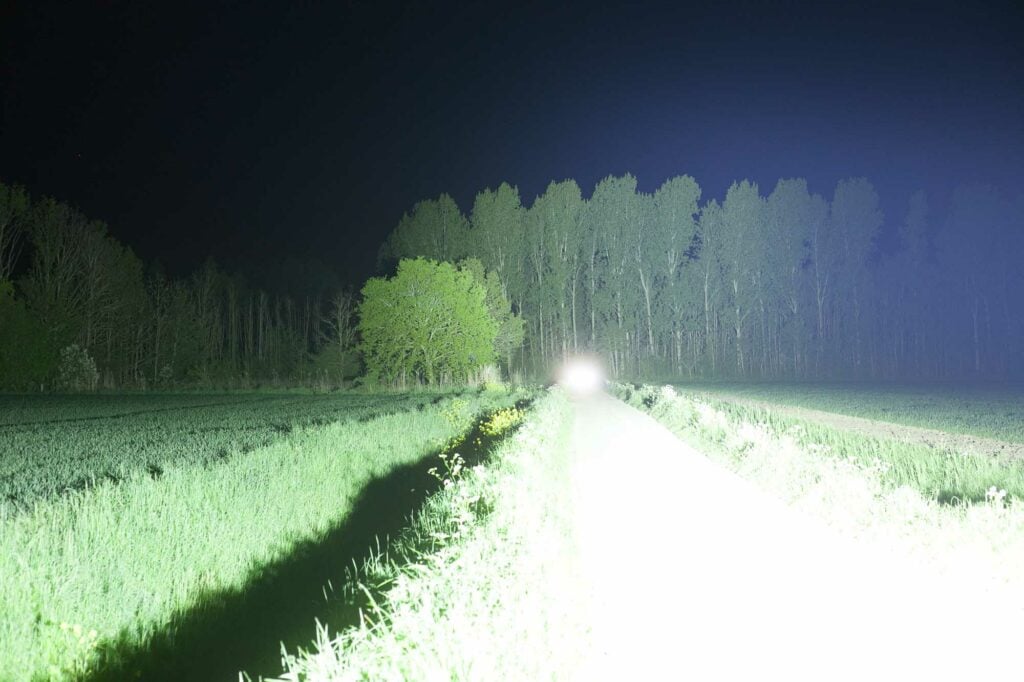
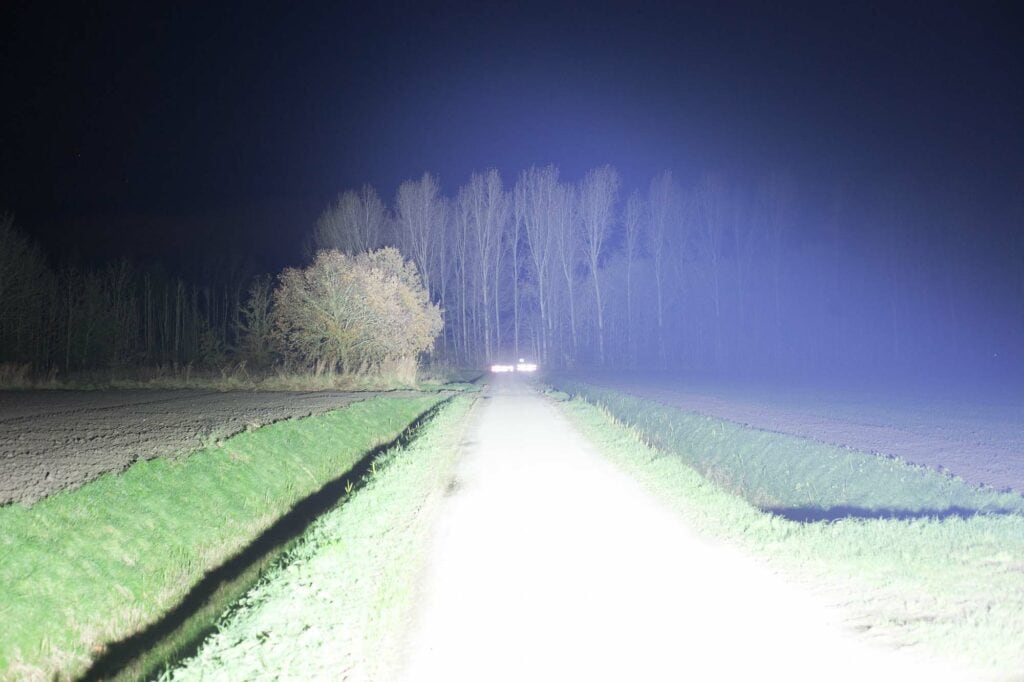


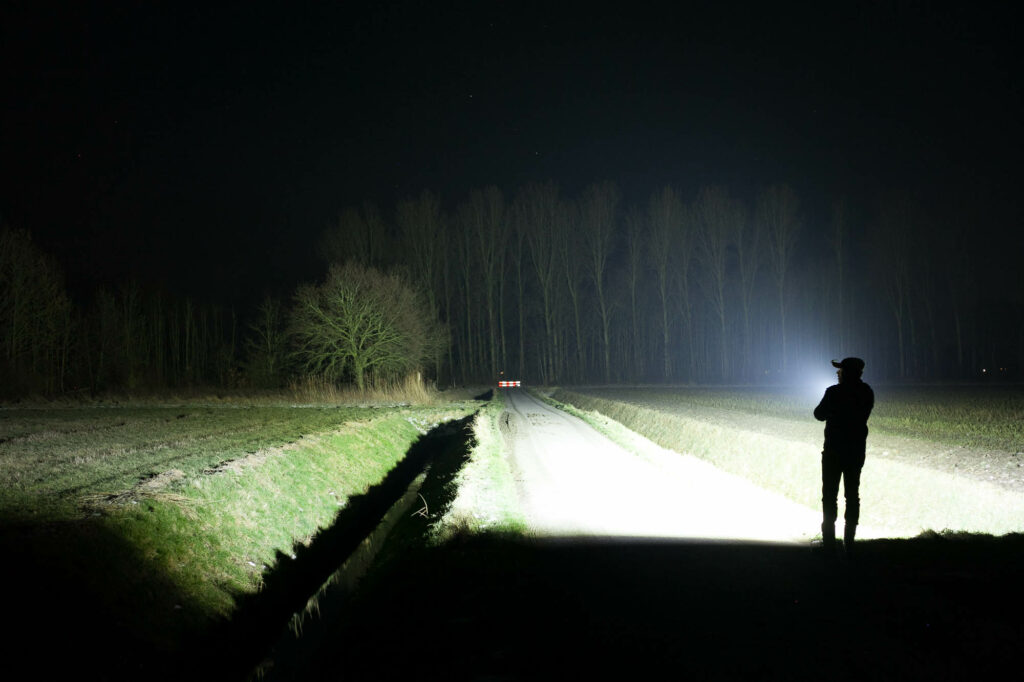


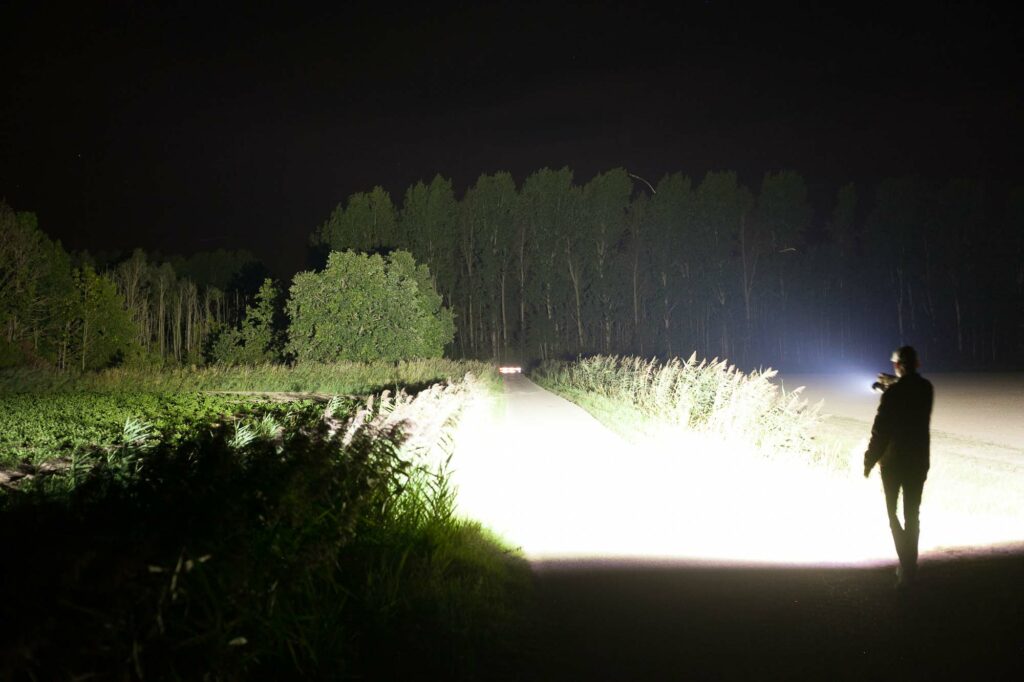
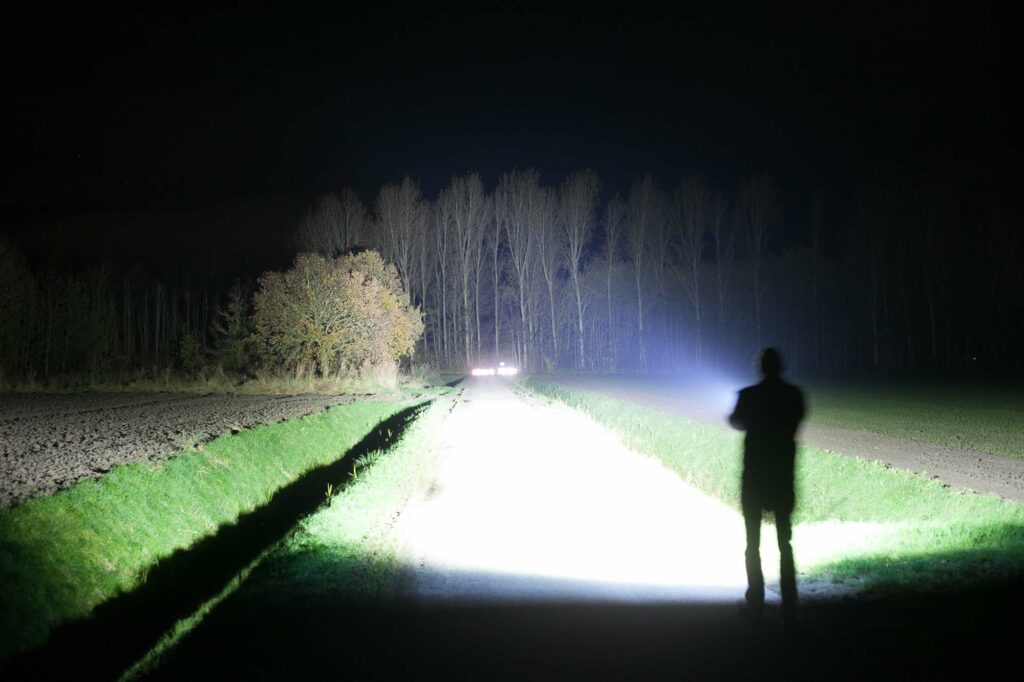

Disclaimer: This flashlight was sent to us for review at no cost by Imalent. We have not been paid to review, nor have we been holding back on problems or defects.
Final Verdict
Pros
- The brightest flashlights in the world!
- Built in cooling fans to reduce the maximum heat, and it works very well
- Carry handle with built-in switch
- Direct access to Moonlight mode from Off
- Over 100 Watt charging
- Charging within 1 hour and 45 minutes
- Highest sustained output in the world
- Powerbank feature with at least 65 watt of discharge
- Insane 700 meters with flood, and 40,000 lumen output
Cons
- Fans only work with the highest output modes, and can’t be activated manually when the flashlight is on
- Connecting the shoulder strap is a bit rough
- No tripod mount
- Still no thermal control in Mid2 and High 1 mode.
- Display shows low battery, but nobody is likely going to look at it.
- Can’t know the memorized output when the flashlight is off
Explanation on star ratings:
1: Avoid: my phone flashlight would be a better choice – 2: Poor: significant defect or issues; almost unusable – 3: Average: some defects or issues; but still usable 4: Good: recommended (minor issues) – 5: Great: highly recommended

4.5 stars: ★★★★⋆
While our star rating provides a reliable indicator, we encourage you to read the full review to make an informed decision based on your own needs and preferences.
Yes, we have another winner.
It’s hard for me as a reviewer to measure this output reliantly. At least, from my testing, it can do 180,000 lumens easily, as that’s what I have measured. In reality, it could do 5-10+% higher because of my setup with loss of light.
Some of the nicest features are the improved placement of the switch on the handle, the highest sustained output. The 3 fans also really help keeping the temperature at check, and they seem to be quite a bit less noisy as well.
If you think about it, to have a massive wide beam, at 40,000 lumens lighting up a field of 700 meters is really insane. After the output drop in Turbo, that’s what you basically have.
Another interesting fact is that High1 is not thermal controlled, which means that you can get about 18,000 lumens (without the use of the fans) for almost 1.5 hours. That’s about 3 times as long as the X75 (with fan) and twice as long as the SR32 (with fans). And then you still have High 2, High 3 and Turbo above that..
Pretty incredible! It’s performance is like nothing else on the planet!
Buy your Imalent MS32 at a discount
If you order this flashlight from Imalenstore, make sure you add our exclusive coupon code at checkout for an extra 10% off. Coupon code: 1lumen
1lumen selects and reviews products personally. We may earn affiliate commissions through our links, which help support our testing.